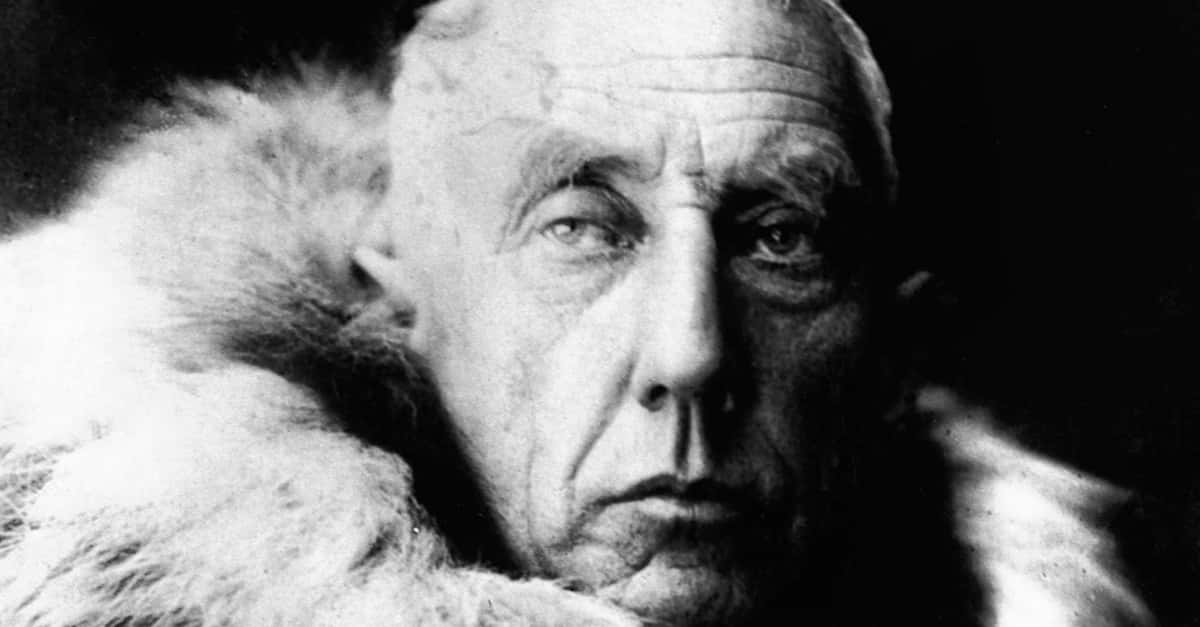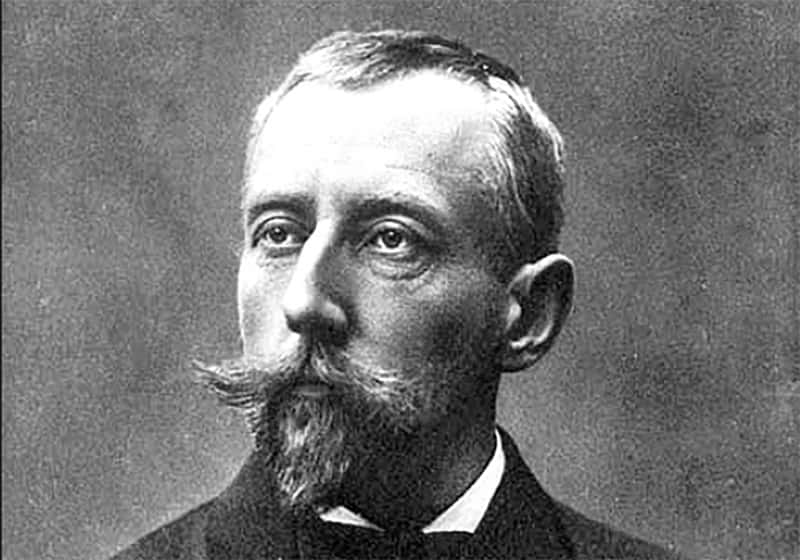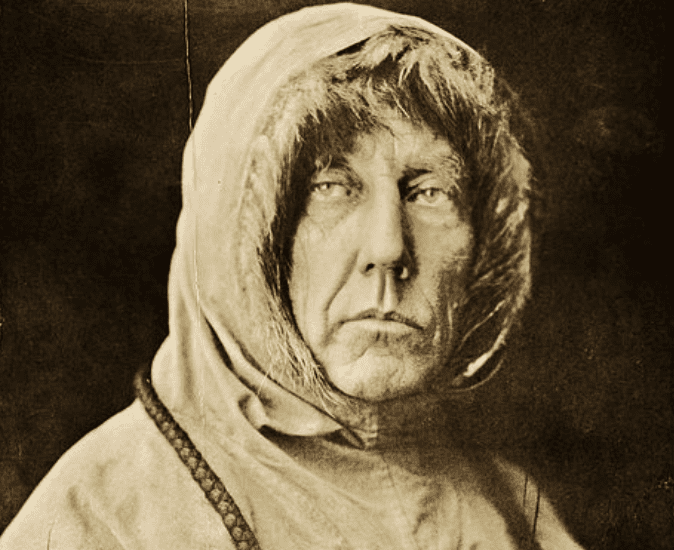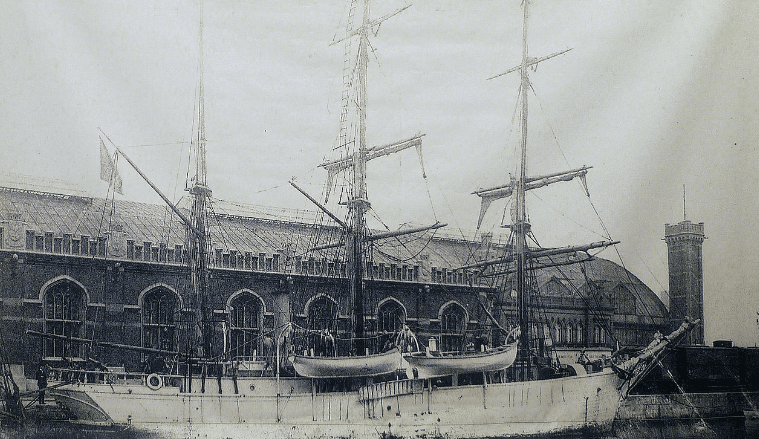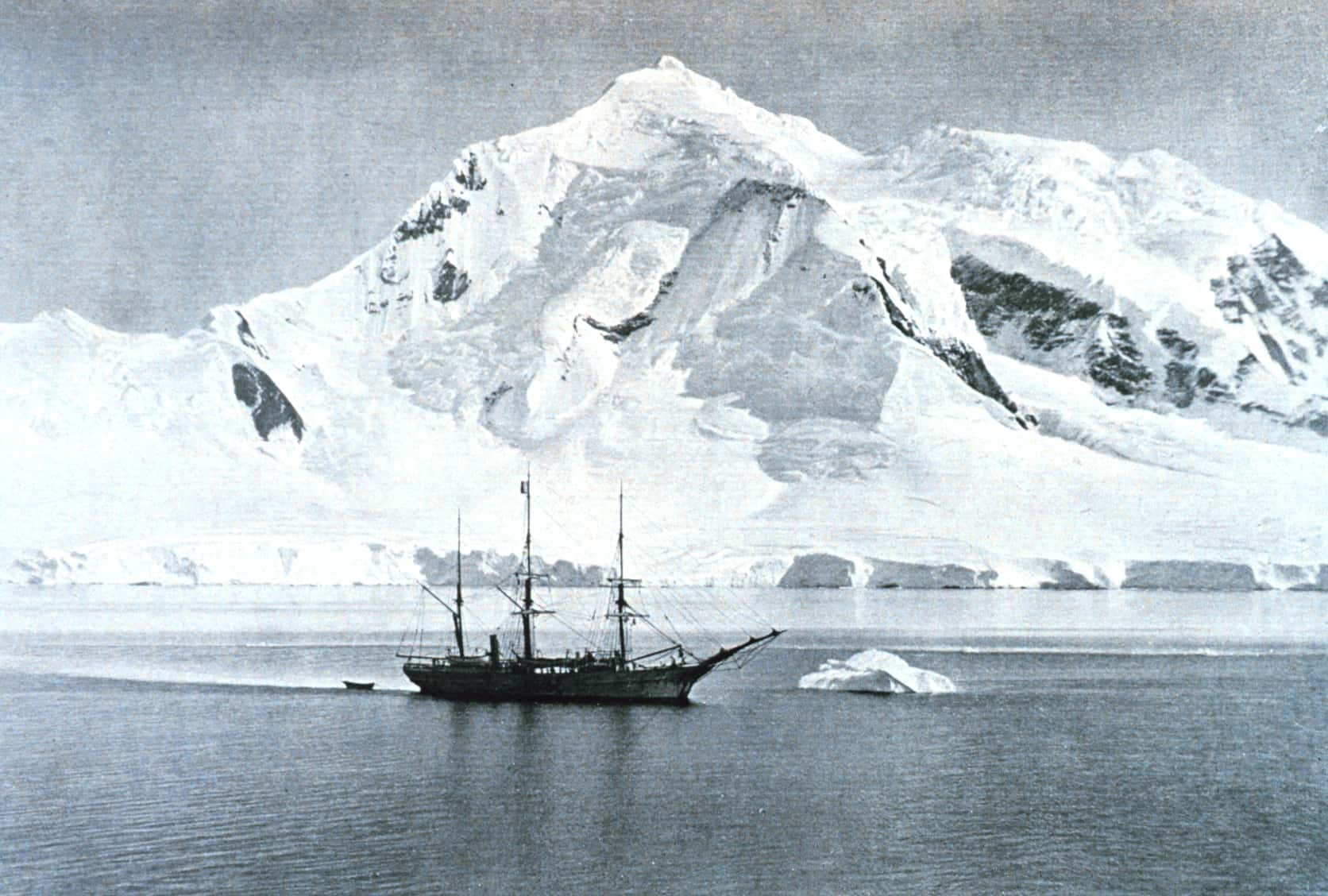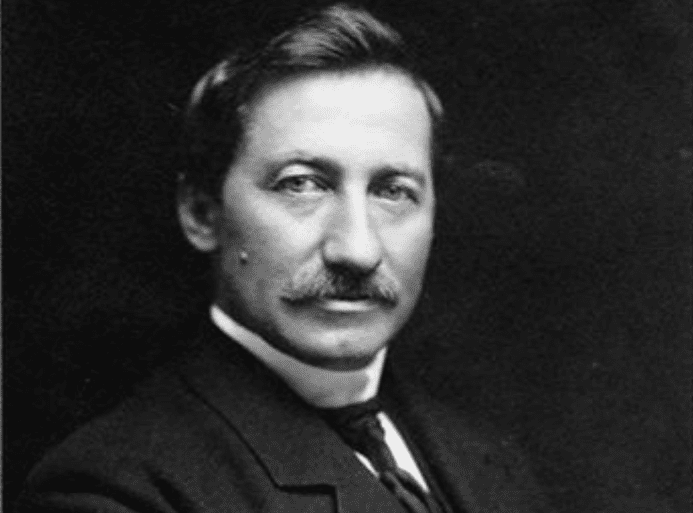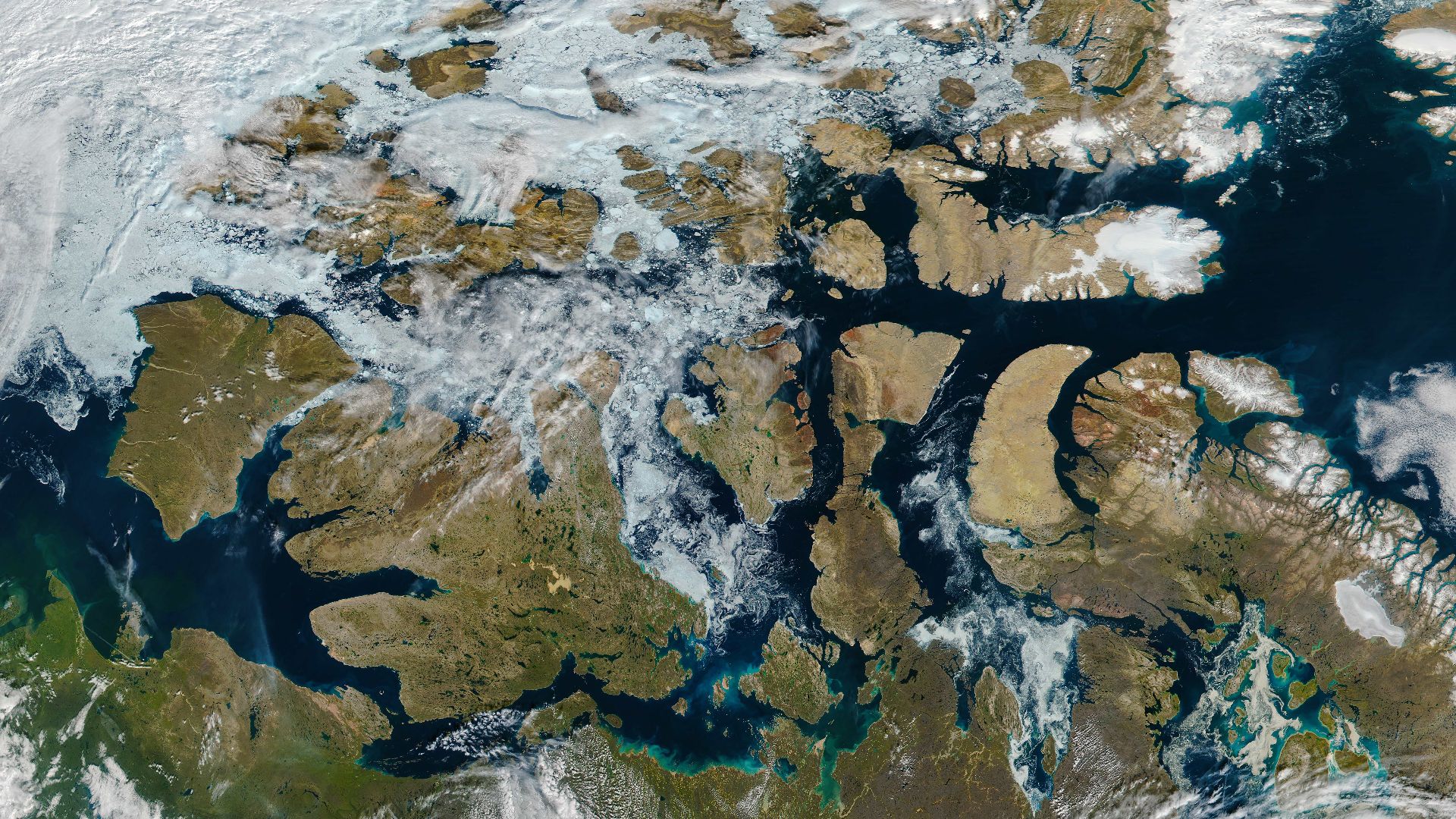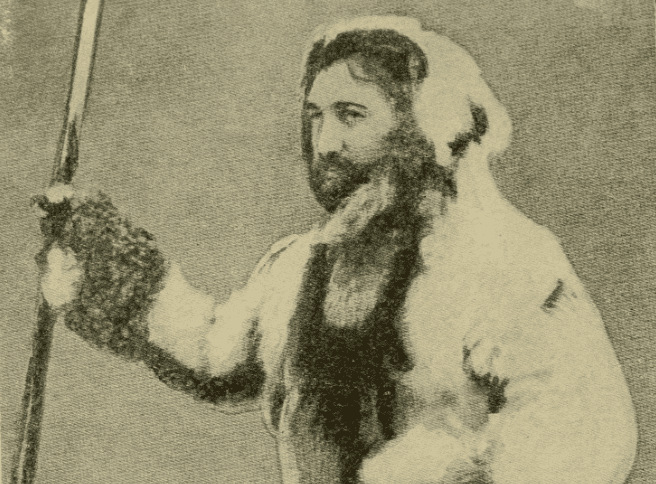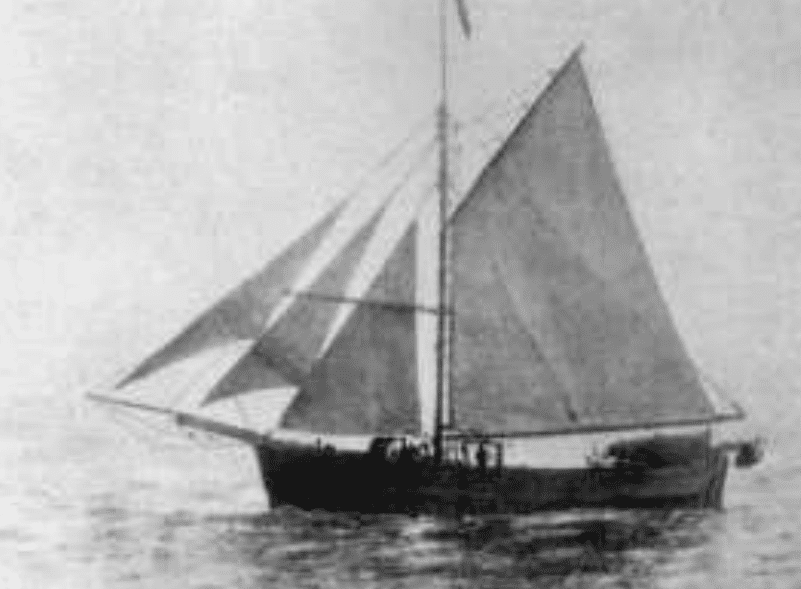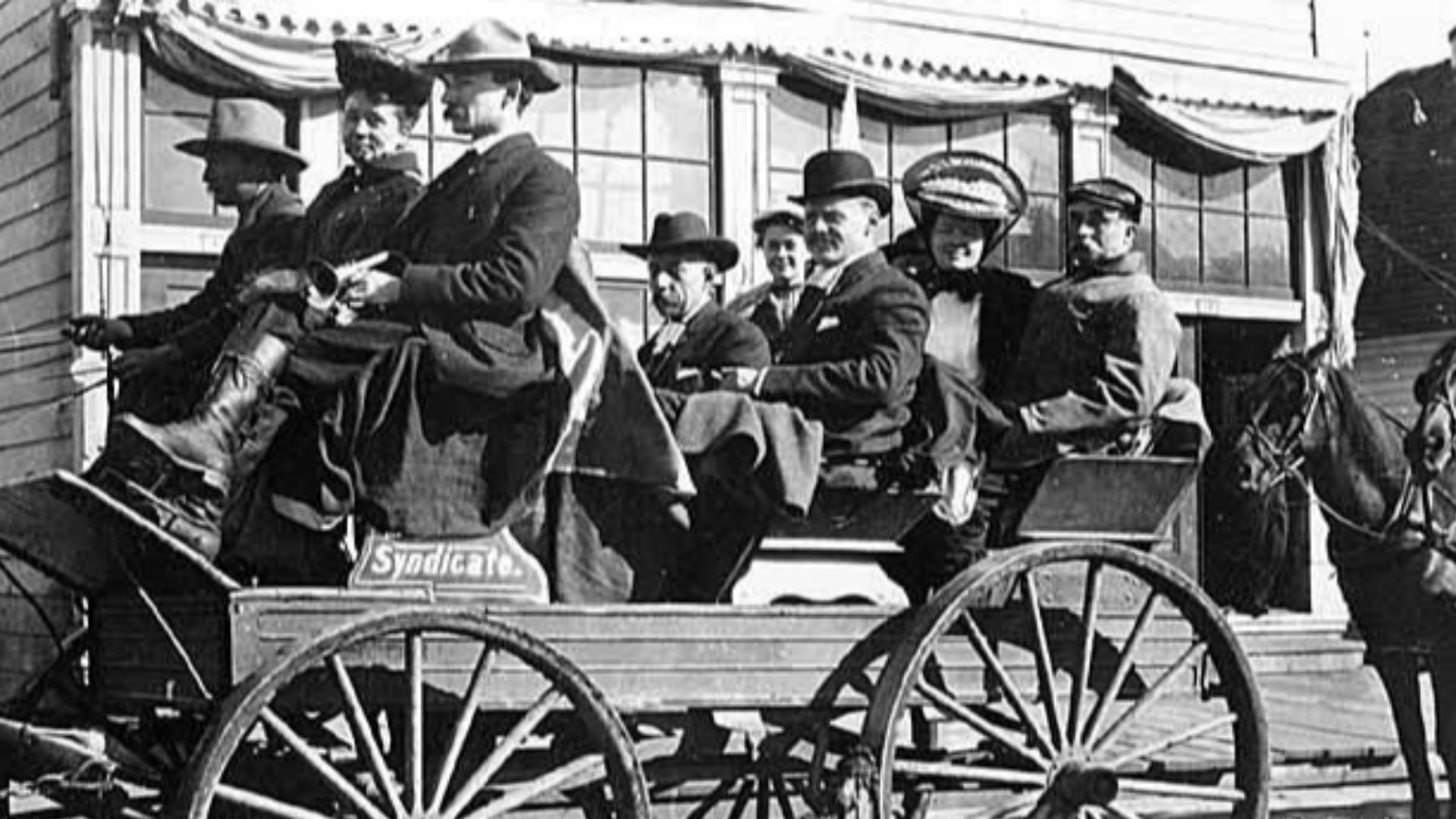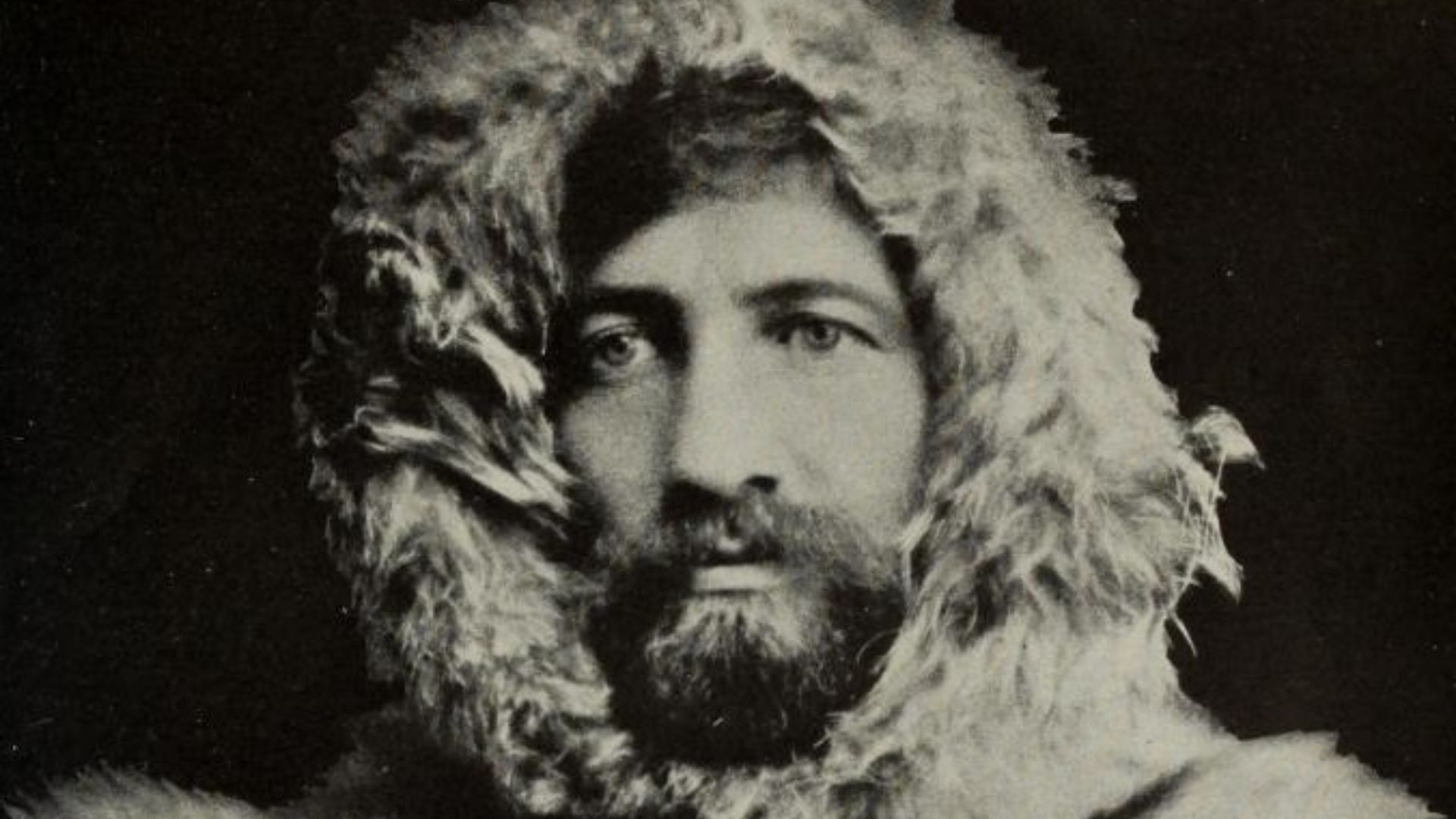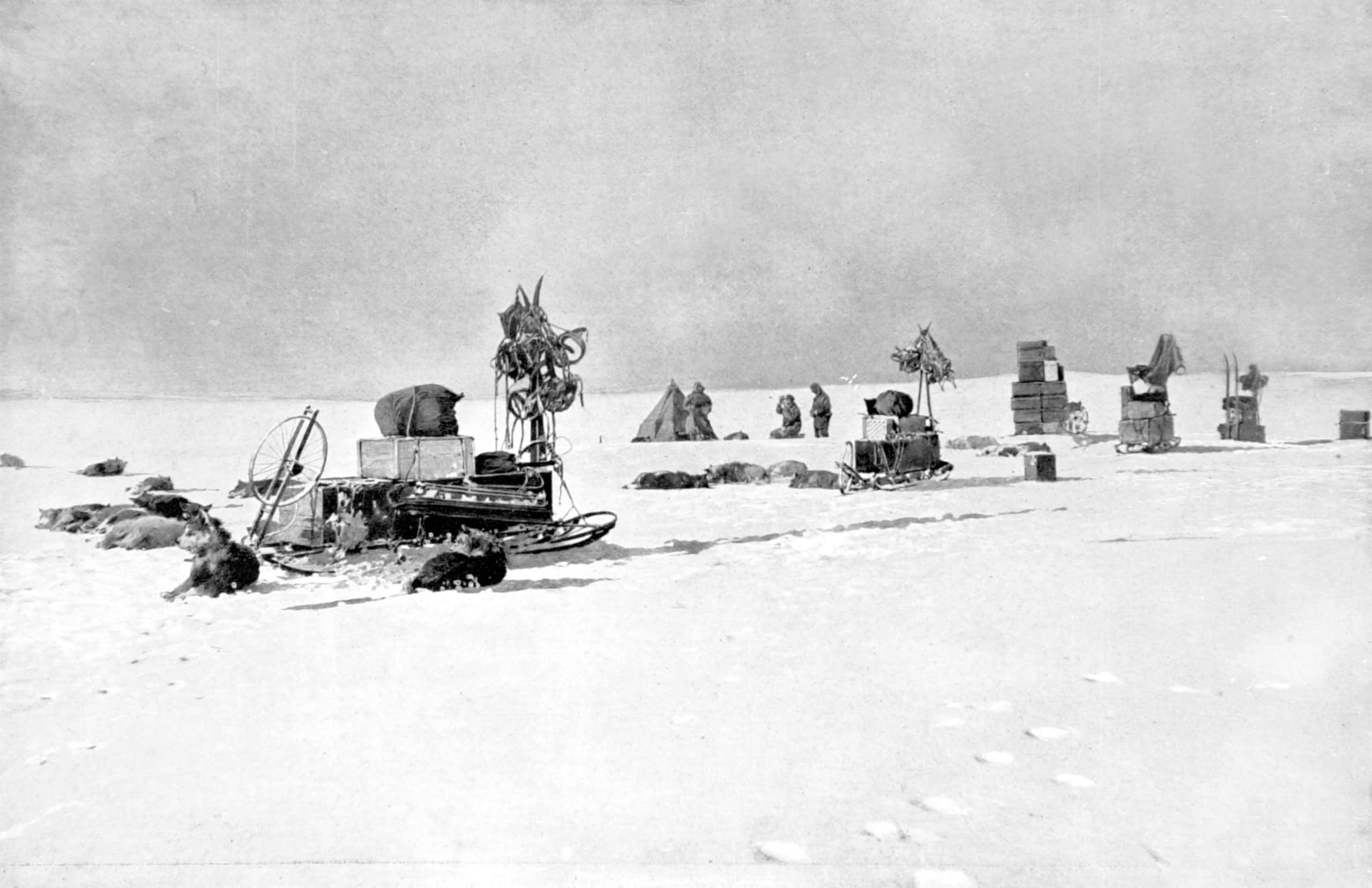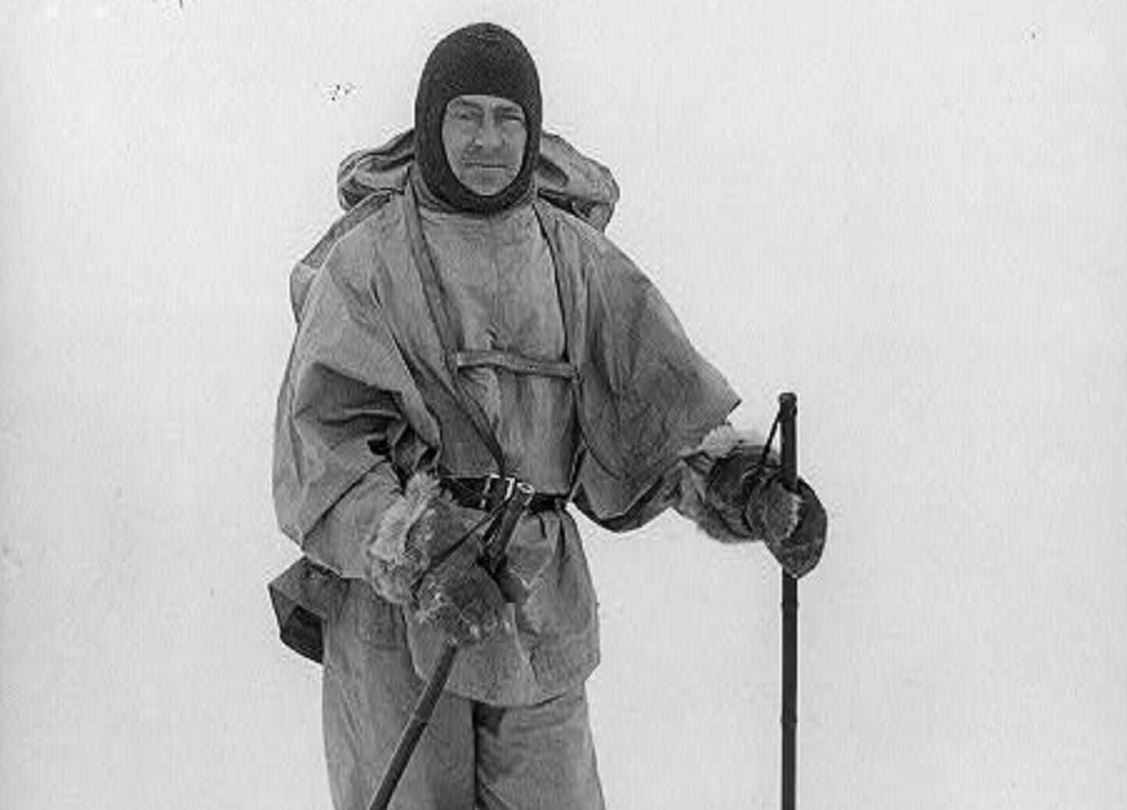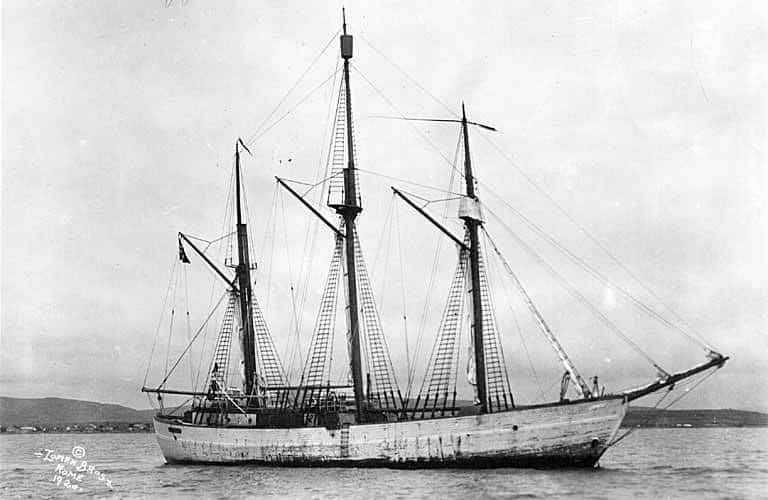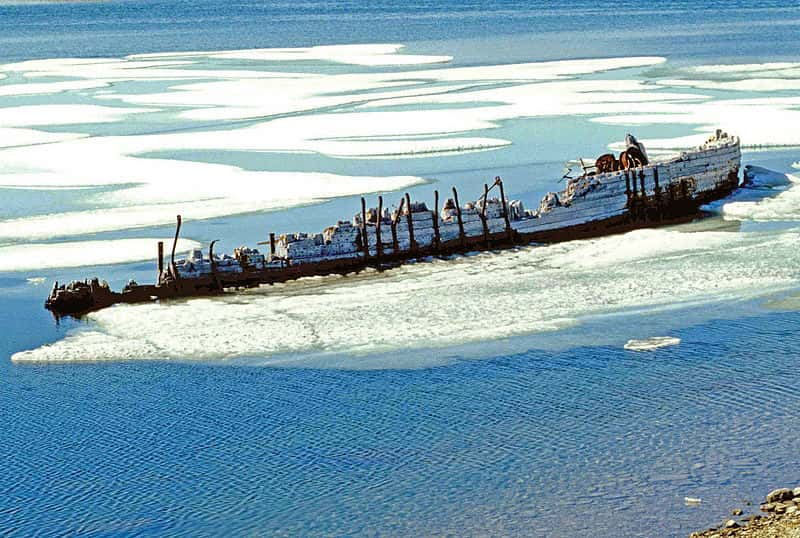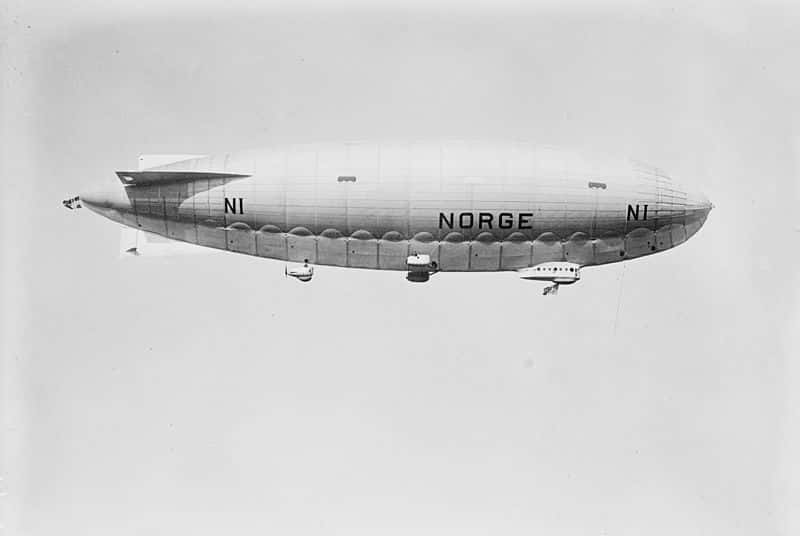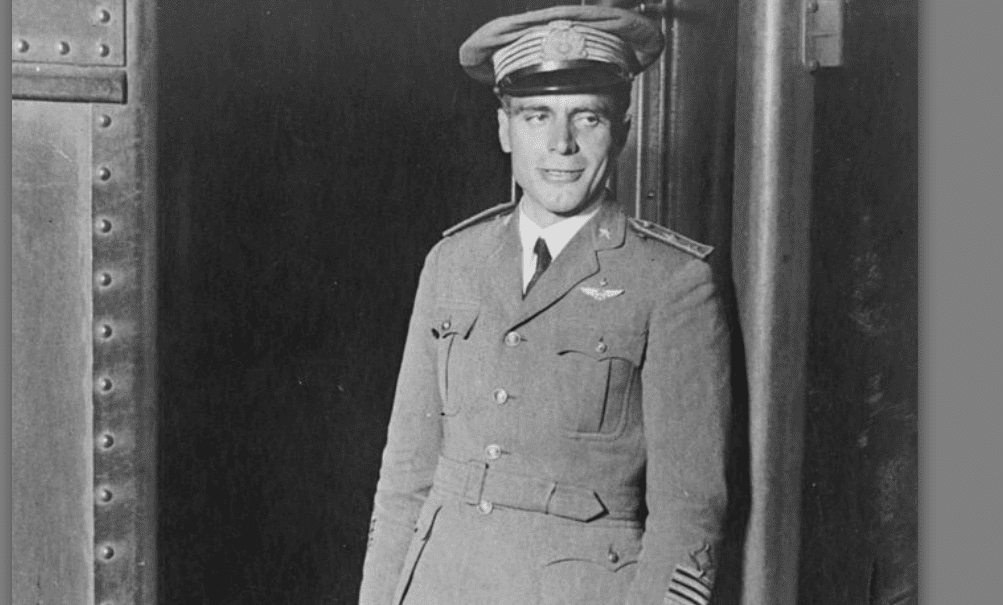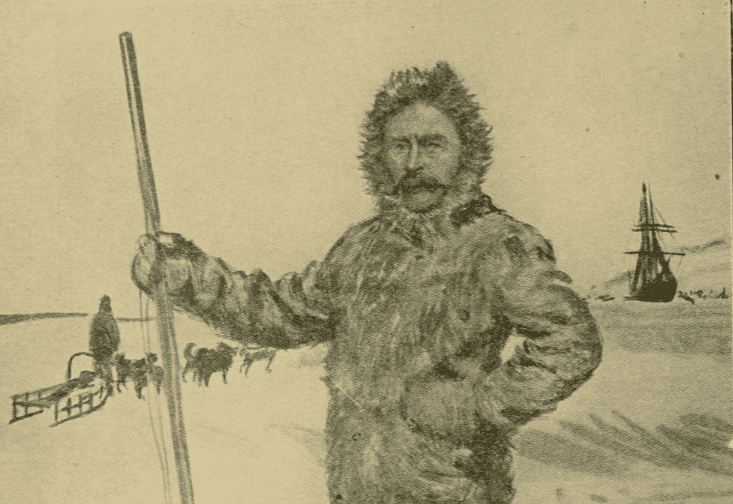Suffering From Polar Fever
Roald Amundsen had his destiny burned into his blood. From the moment that he entered the world, the waters called to him, beckoning him from the safety of his home into the great unknown. Without Amundsen, huge chunks of the globe might’ve remained unknown. If only Amundsen could’ve ignored the call just once. Maybe then he’d have been spared a mysterious and icy fate.
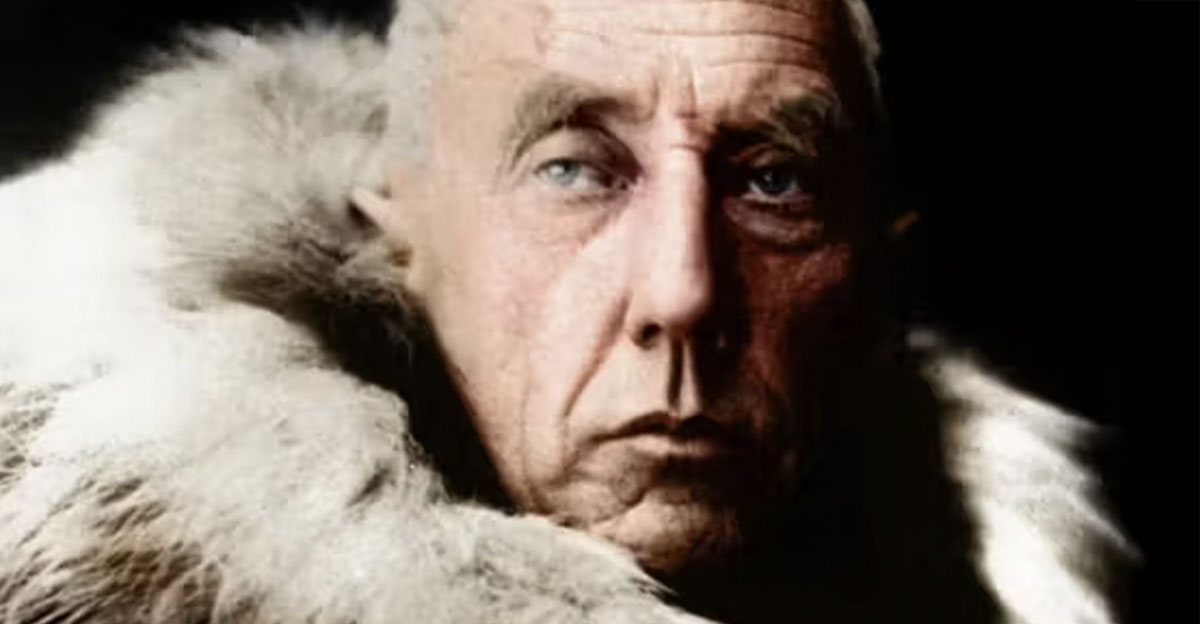
1. He Bore A Legacy
The ocean ran through Amundsen’s veins, almost literally. He entered a family of captains and owners of ships in Norway. Being her fourth son, his mother Hanna Sahlqvist attempted to spare her baby from the fate she feared for all her other children. Unfortunately, a mother’s reach could only go so far.
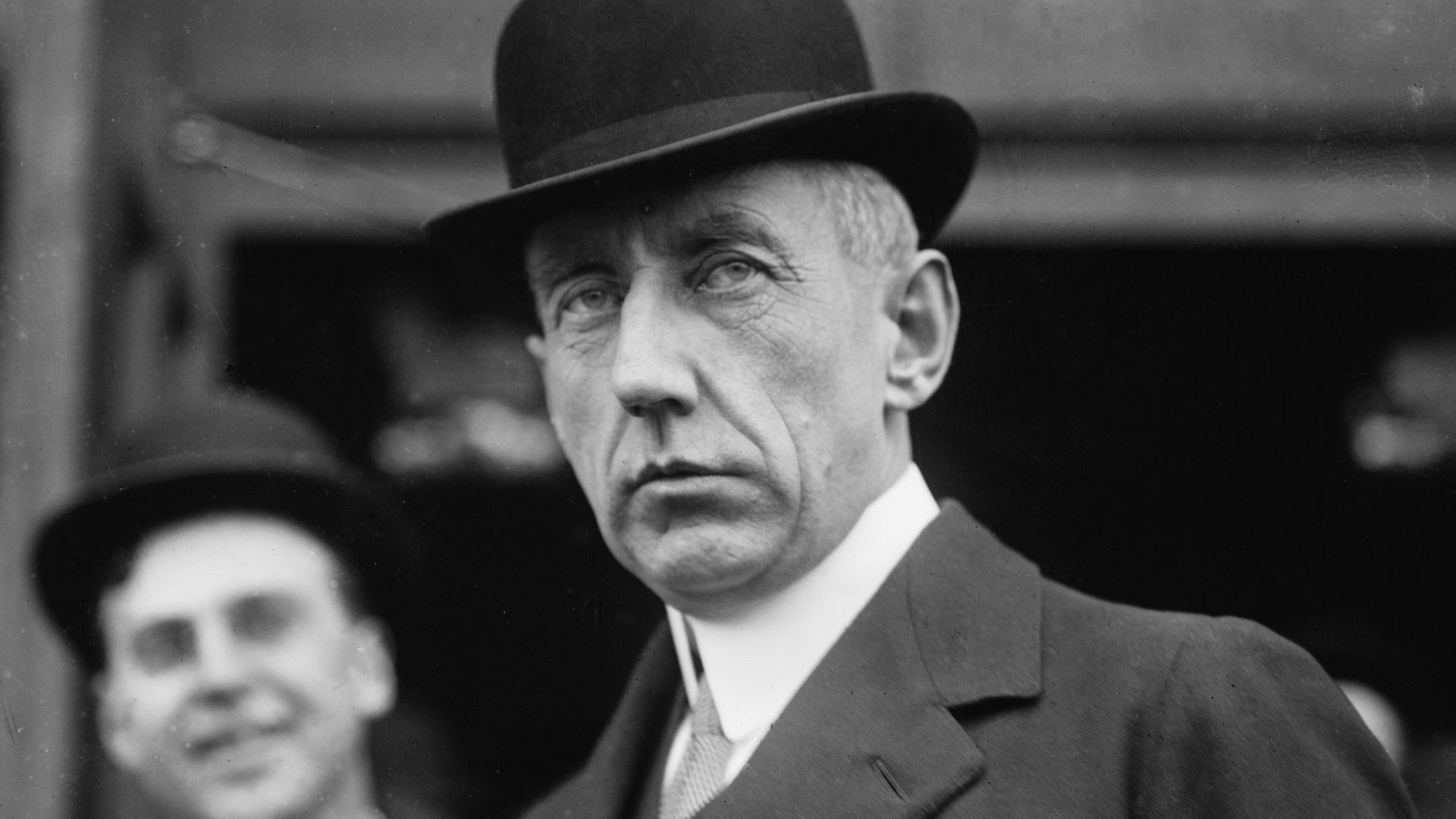 Balcer~commonswiki, Wikimedia Commons
Balcer~commonswiki, Wikimedia Commons
2. He Tried To Deny It
Hanna dreamed that Roald Amundsen would shirk the family business. Instead, she wanted Amundsen to become a doctor. Unable to resist the influence of his mother, Amundsen agreed. He applied to university, beginning his courses to become a doctor, but the call of adventure never left him.
3. He Was Torn In Two
Amundsen wanted to respect his mother’s wishes, likely hoping to avoid her any pain. However, his heart belonged to exploration. At the age of 15, he discovered the adventures of Sir John Franklin in the Arctic. From that moment, an icy shard entered his heart that he could never shake. Yet, as long as his mother lived, he could not disappoint her.
4. His Fate Changed
Fate appeared to be looking out for Roald Amundsen. At the age of 21, his mother left the world. While surely heartbroken over the loss, this passing also created a new opportunity for Amundsen. He could now follow his passions without the consequences of breaking his mother’s heart.
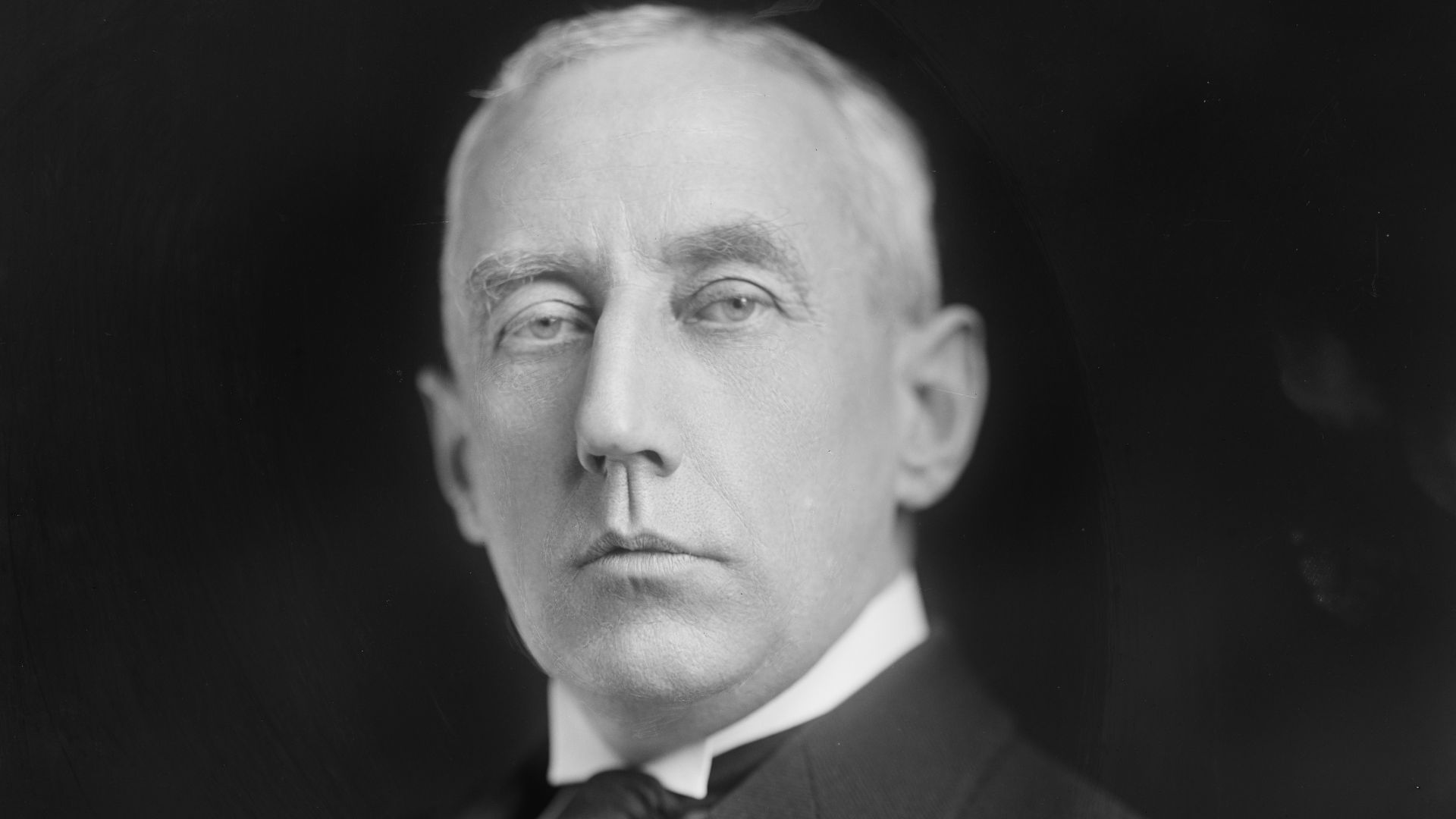 Harris & Ewing, photographer, Wikimedia Commons
Harris & Ewing, photographer, Wikimedia Commons
5. He Took The First Opportunity
Amundsen quit university immediately following the passing of his mother. Instead, he threw his entire focus into his dream: spending his life at sea. Within a few years, Amundsen saw that dream come to fruition. He joined Adrien de Gerlache’s expedition to the Antarctic and quickly learned why his mother feared the sea so much.
6. He Became Trapped
Their ship, the RV Belgica, made it to the outer edges of Antarctica, finding themselves slightly west of the peninsula. Yet, they did not get further. Whether by design or mishap, the Belgica became locked in the ice—they were spending winter trapped in Antarctica whether they liked it or not.
7. He Wasn’t Prepared
If the Belgica intended to winter in Antarctica, they prepared poorly for it. The provisions that they brought did not last a long, icy winter frozen in place. They shouldn’t have made it. According to Amundsen, the entire crew of the Belgica owed their lives to one man.
8. He Owed His Life To One Man
Frederick Cook, an American explorer and physician, joined the crew as their doctor. Roald Amundsen wagers that they owed their lives to Cook. Aware that raw meat can provide an alternative source of vitamin C when citrus fruit is no longer available, Cook hunted animals to provide the entire crew with fresh meat to stave off scurvy. Despite a near disaster, Amundsen’s heart continued to beat for the poles.

History's most fascinating stories and darkest secrets, delivered to your inbox daily.
9. He Carried On His Dreams
Six years later, Amundsen collected enough knowledge and support to set out on his own. His destination? The famed Northwest Passage. Explorers had been seeking a route around North America since Christopher Columbus. Robert McClure discovered the frozen Northern Passage in 1850, but no one had been able to traverse it. Amundsen felt he had the solution.
10. He Tested A Theory
Roald Amundsen theorized that part of the problem of previous expeditions was the size of their ships. Instead, he set out with a smaller crew and a smaller ship designed for flexibility, allowing him to stay close to the coast. Initially, they made good time. However, things froze into place once they reached northern Nunavut.
11. He Took His Time
Gjoa, Amundsen’s ship, and her crew spent two winters at King William Island, Nunavut. By October 1903, the straits began to freeze, so Amundsen steered Gjoa into a small natural harbor, now known as Gjoa Haven. While Amundsen and his crew remained there for nearly two years, they made the most of their time there, perhaps in more ways than one.
12. He Learned From Others
Roald Amundsen learned a lot from the local Netsilik Inuit while staying at King Williams Island; this information became essential for his later survival. However, he and his crew have also been accused of getting up to other activities while they waited out the ice.
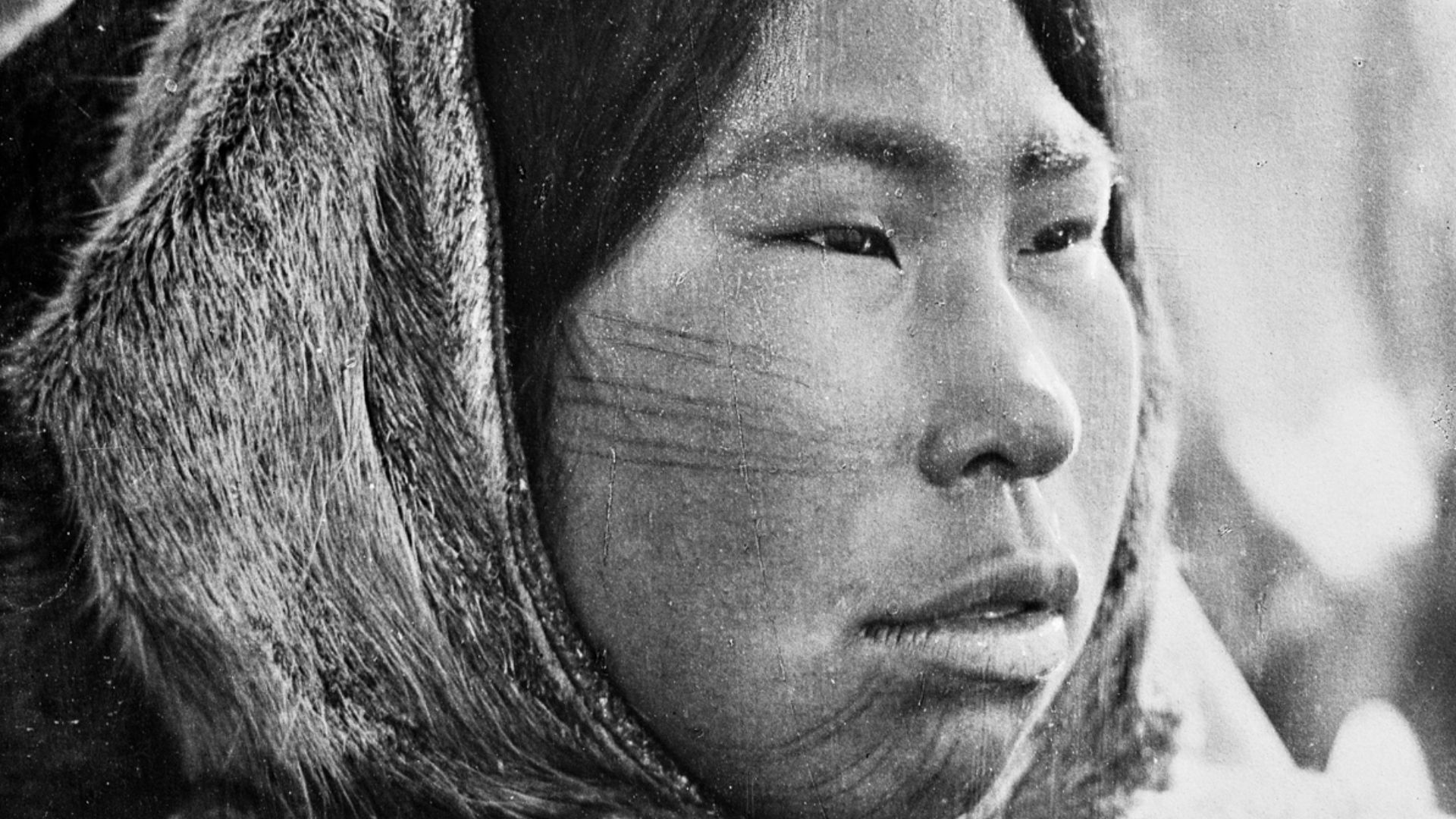 Nasjonalbiblioteket from Norway, Wikimedia Commons
Nasjonalbiblioteket from Norway, Wikimedia Commons
13. He Left His Mark (Maybe)
Man will do as man does. Two years (give or take a month) is a long time to spend in isolation. People crave company. To date, several members of the Gjoa Haven community with European ancestry claim to have descended from Amundsen and his crew. Those who have been tested have come up negative. Yet, not every claim has been tested, so no one can rule out the possibility entirely.
 Daniel Georg Nyblin, Wikimedia Commons
Daniel Georg Nyblin, Wikimedia Commons
14. He Had One True Love
The truth seems to be that Roald Amundsen spent much of his life disinterested in romantic connections. He supposedly warned against taking up “companions” when in Gjoa Haven, and one author felt Amundsen “found little use in activities that didn't help him fulfill his polar ambitions”. He certainly approached the Northwest Passage with a singular mindset.
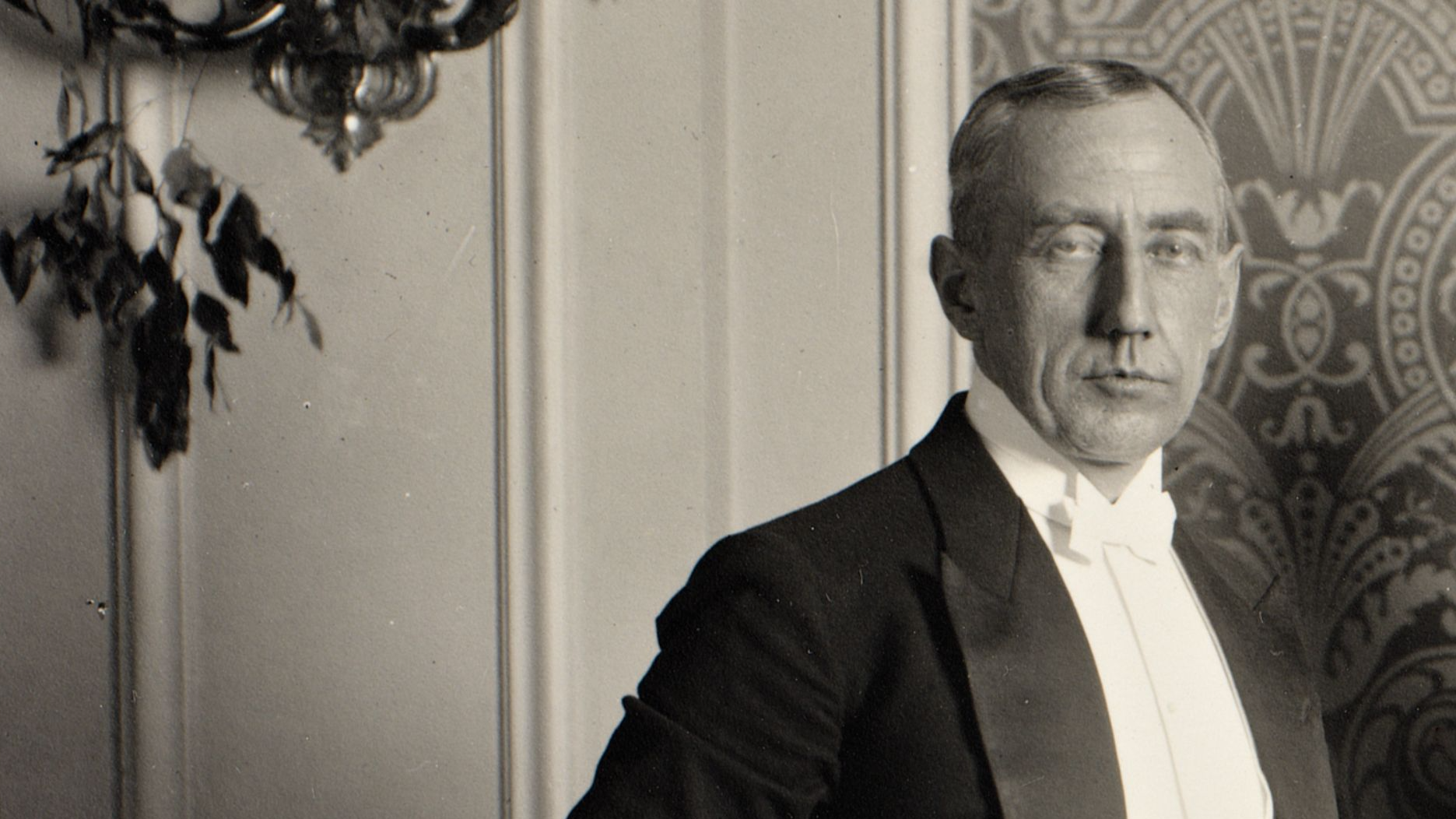 Nasjonalbiblioteket from Norway, Wikimedia Commons
Nasjonalbiblioteket from Norway, Wikimedia Commons
15. He Finally Got Free
After a nearly two-year delay, Amundsen carried on, clearing the chaotic spread of islands that made up the Canadian Arctic Archipelago by August 1905. However, winter forced them to stop once more before they could reach their final destination. To be so close, and yet stand still, could’ve broken a man with such a fierce focus on his goal.
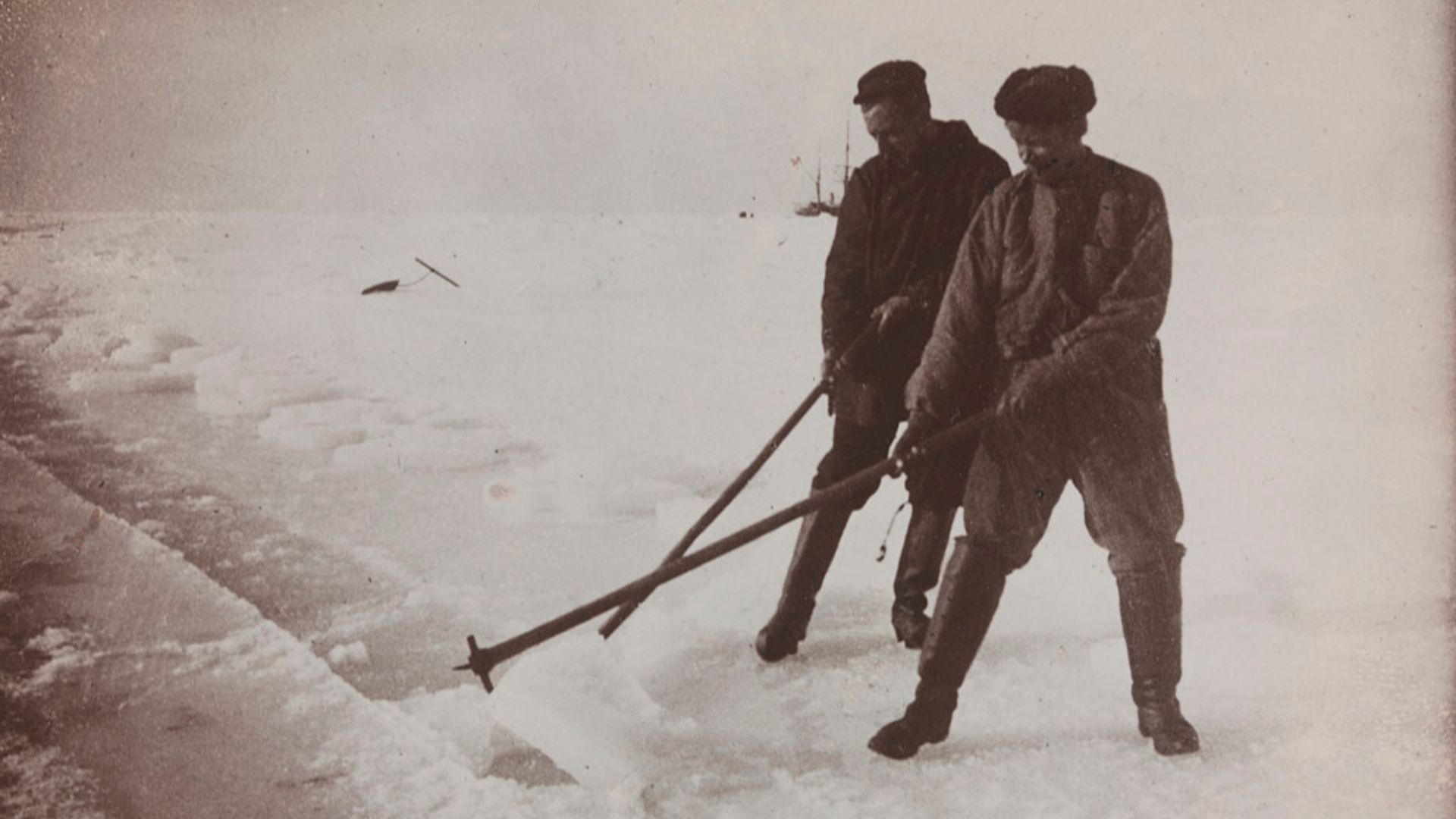 Frederick Cook, Wikimedia Commons
Frederick Cook, Wikimedia Commons
16. He Became Trapped Again
It could’ve broken Roald Amundsen easily, and yet he refused to let it. After three winters, Amundsen reached Nome, Alaska, officially becoming the first man to lead a successful crossing of the Northwest Passage. He’d finally done what he’d set his mind to. Except, he had one teeny, tiny problem.
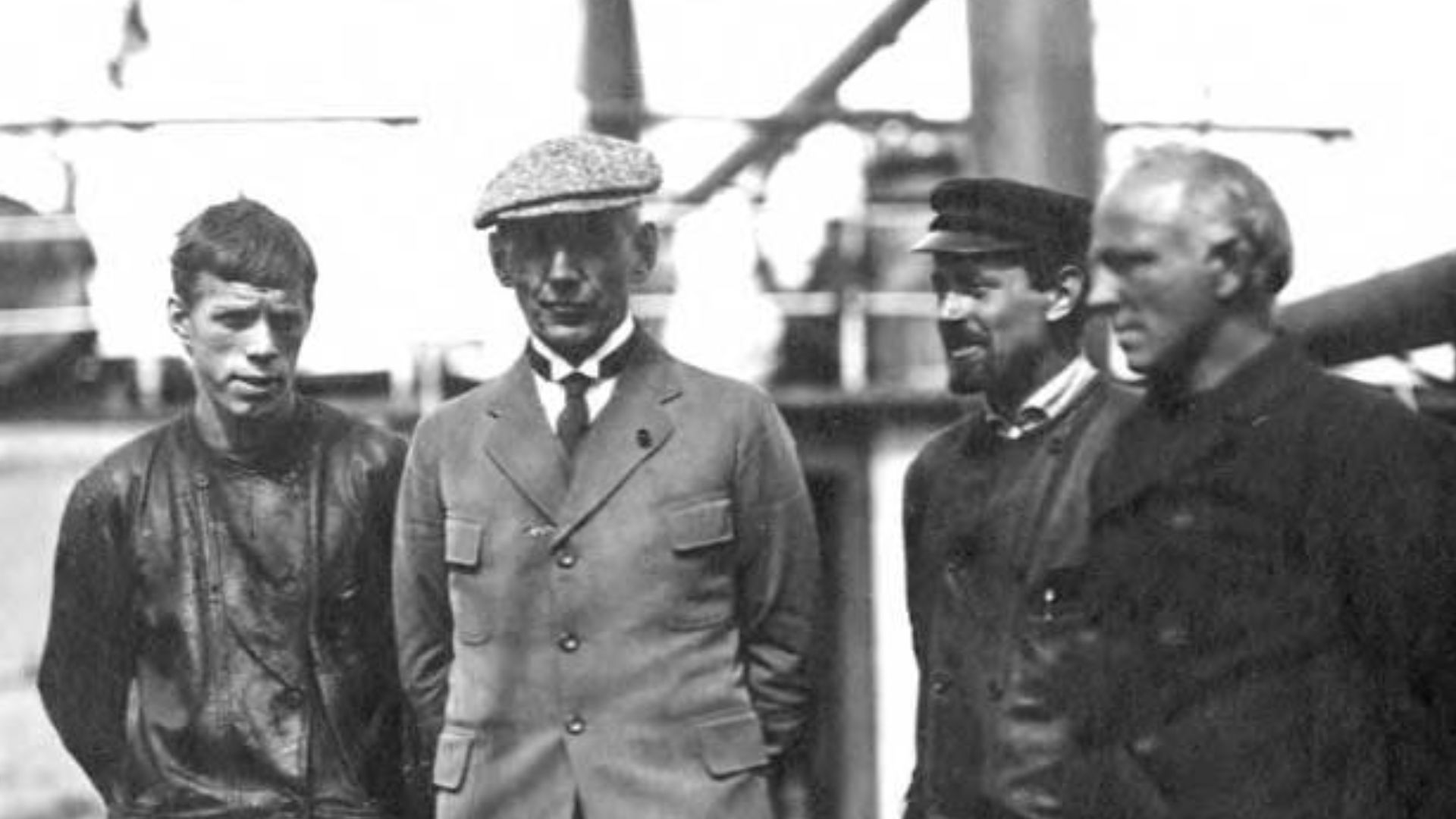 Lomen Bros., Wikimedia Commons
Lomen Bros., Wikimedia Commons
17. He Couldn’t Tell Anyone
No one knew of Amundsen’s success. Nome sat on the coast of Alaska. It had no telegraph station. The closest one sat in Eagle, 500 miles (800 km) north, near the Alaska/Yukon border. Undeterred by this final obstacle, Amundsen set out to make the last crossing overland. He’d tell people of his success even if it cost him his life.
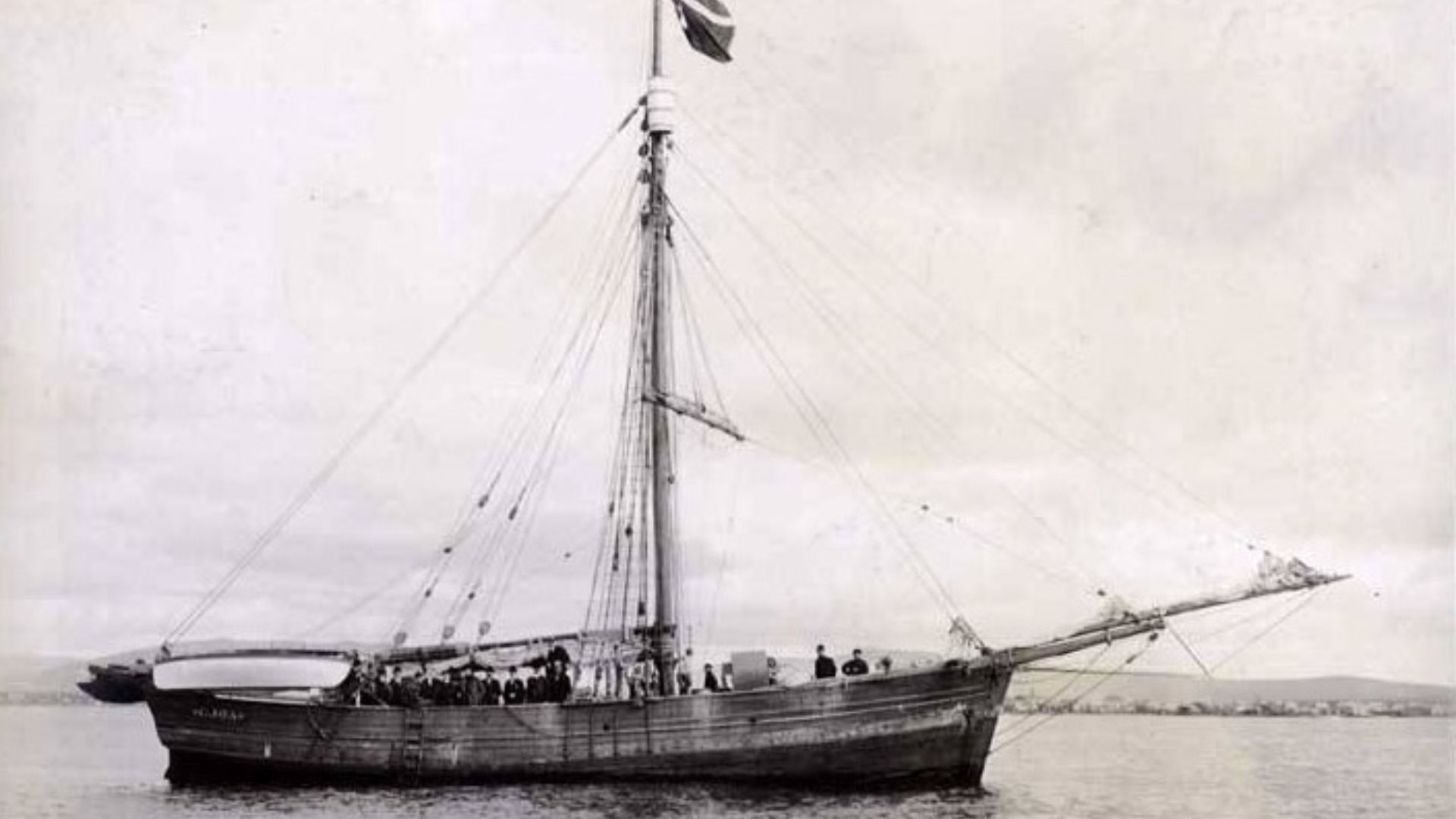 Frank H. Nowell Photograph Collection, 1901-1908. ASL-PCA-48, Wikimedia Commons
Frank H. Nowell Photograph Collection, 1901-1908. ASL-PCA-48, Wikimedia Commons
18. He Couldn’t Give Up
Roald Amundsen sent his message of success from the Eagle telegraph station on December 5. He spared no time in making his return trip, landing in Nome after the new year. Having successfully navigated the passage, Amundsen and his crew took another 11 months to make it back to Oslo, returning in November 1906, roughly three and a half years after they left. Yet, Amundsen had no intentions of resting.
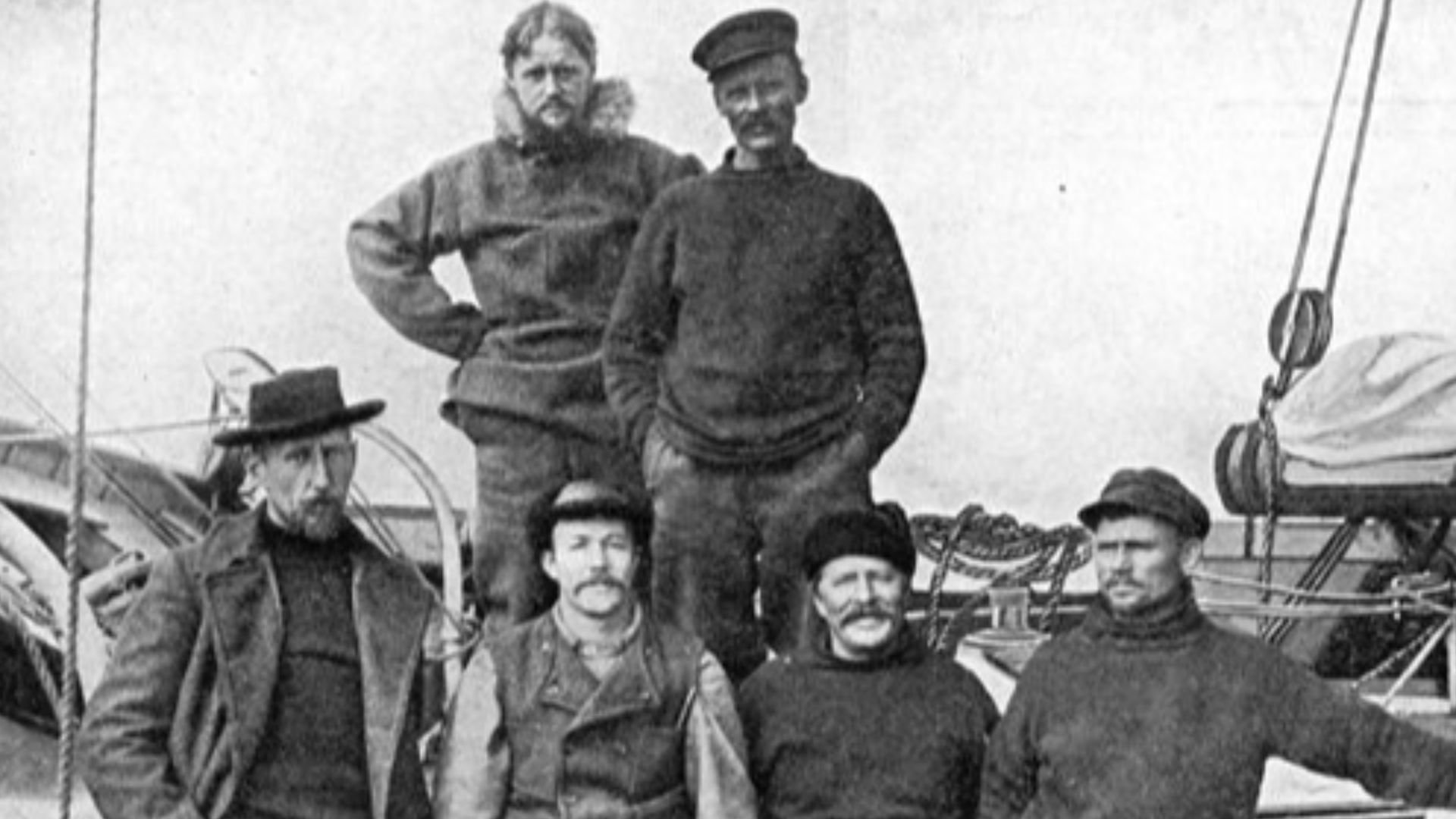 Unknown authorUnknown author, Wikimedia Commons
Unknown authorUnknown author, Wikimedia Commons
19. He Was Never Satisfied
Amundsen did not sit idle with his success. Having navigated the Northwest Passage, Amundsen merely unlocked the full potential of his destiny. He had a taste of an Arctic adventure; now he needed more. He immediately set his eyes on a new goal: the North Pole. Unfortunately, problems quickly rose.
20. He Struggled To Find Money
An expedition of this size needs funds, funds that Roald Amundsen couldn’t put up himself. Therefore, he needed to collect that money. Unfortunately, Norway had only become independent six years earlier (while Amundsen was in the Arctic). Collecting funds proved to be a slow task, and in the meantime, someone else stole Amundsen’s prize.
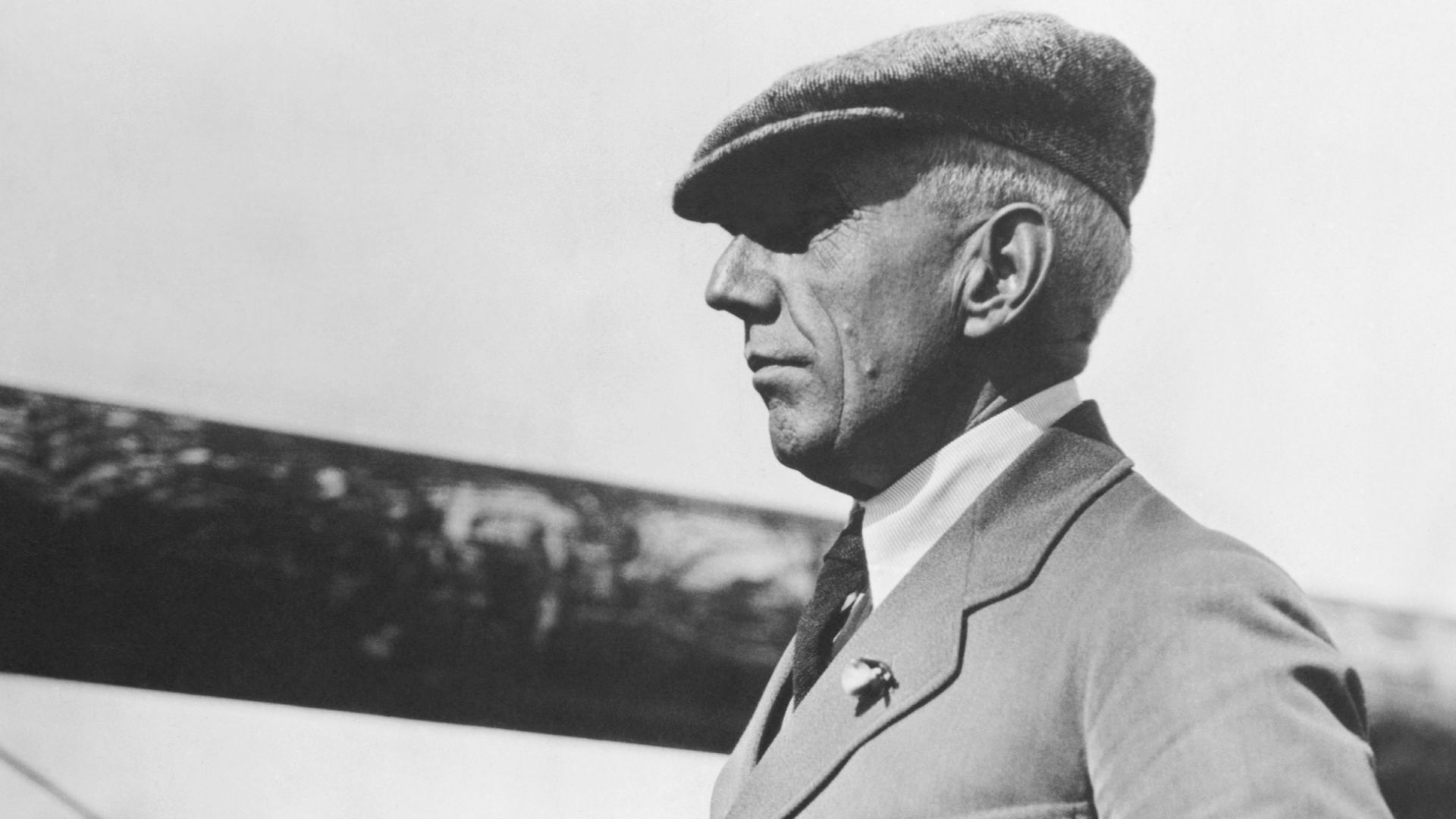 Lomen Bros., Wikimedia Commons
Lomen Bros., Wikimedia Commons
21. His Thunder Was Stolen
Two Americans made claims of reaching the North Pole while Amundsen scrambled for money. The first was Frederick Cook in 1908, the very man that Amundsen credited with saving his life aboard the frozen Belgica. Robert Peary made a similar claim in 1909. No longer promised the chance of being first, Amundsen began rethinking his plans.
22. He Kept His Plans Secret
Outwardly, Amundsen continued with his planning. He collected his funds and used them to outfit his ship, Fram, and his crew. On June 3, 1910, Fram left Oslo with Amundsen, his crew, and his supplies. Everyone, including his crew, thought they were heading north. Only Amundsen knew differently.
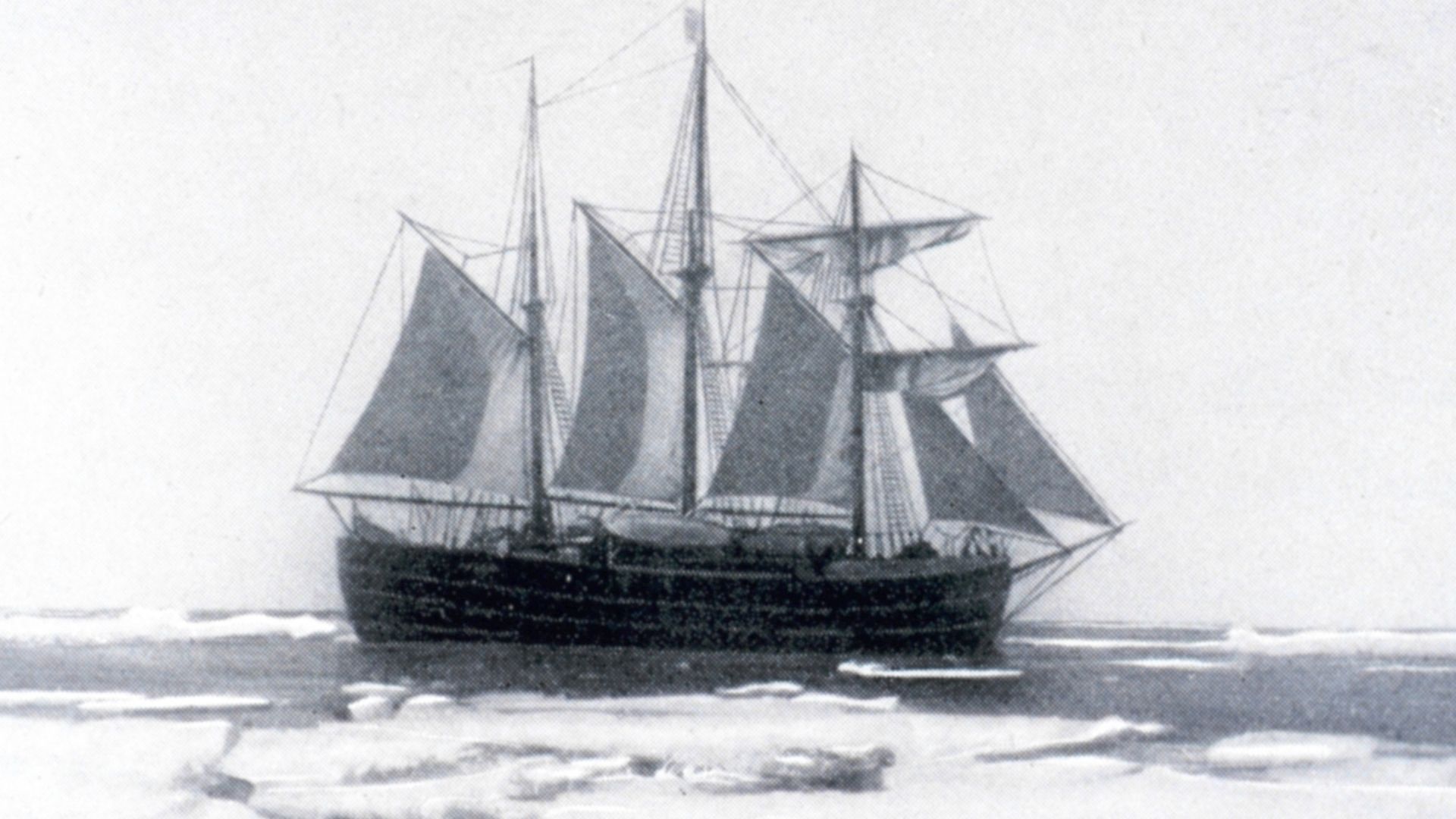 UnknownUnknown , Archival Photograph by Mr. Steve Nicklas, NOS, NGS, Wikimedia Commons
UnknownUnknown , Archival Photograph by Mr. Steve Nicklas, NOS, NGS, Wikimedia Commons
23. He Told No One The Truth
Only once Fram had reached Madeira, some 2,300 miles away from Oslo, did Amundsen inform his crew that their destination had changed. Instead of heading north to a pole that may have already been discovered, they were heading to Antarctica and the South Pole. Amundsen just had one other person to inform of his change.
24. He Had Ulterior Motives
Amundsen kept his plans secret as he feared how both the public and his investors would react. However, he may have had another motive. Another explorer, Robert F Scott, also sought to be the first man to the South Pole. By changing his plans, Amundsen also entered a race with Scott in order to be first.
25. He Had Competition
Scott, a British citizen, left Cardiff on Terra Nova on June 15, 1910, about 12 days after Amundsen left, thinking he sailed the waters south alone. Only when Scott arrived in Melbourne, Australia, did he receive a cheeky little telegram from Amundsen that changed everything.
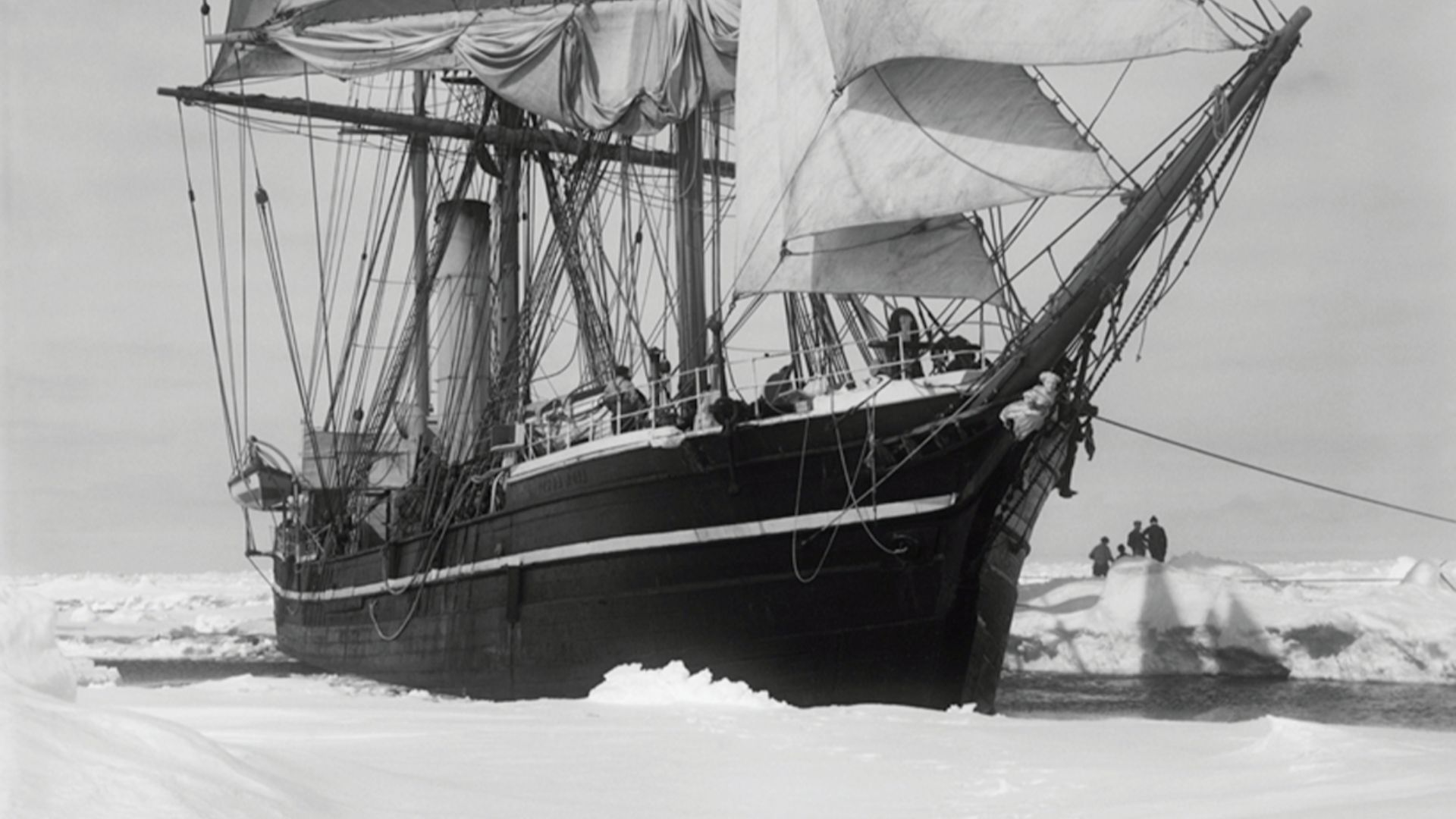 Herbert Ponting, Wikimedia Commons
Herbert Ponting, Wikimedia Commons
26. He Was Cheeky
Amundsen kept his note to Scott short and sweet. “Beg to inform you, Fram proceeding Antarctic – Amundsen”. Having informed his competition that the race was on, Amundsen continued south with his crew, at the eastern edge of what they knew as the Great Ice Barrier, six months later. Making “land” in the Bay of Whales, Amundsen’s crew still had a lot of work ahead of them.
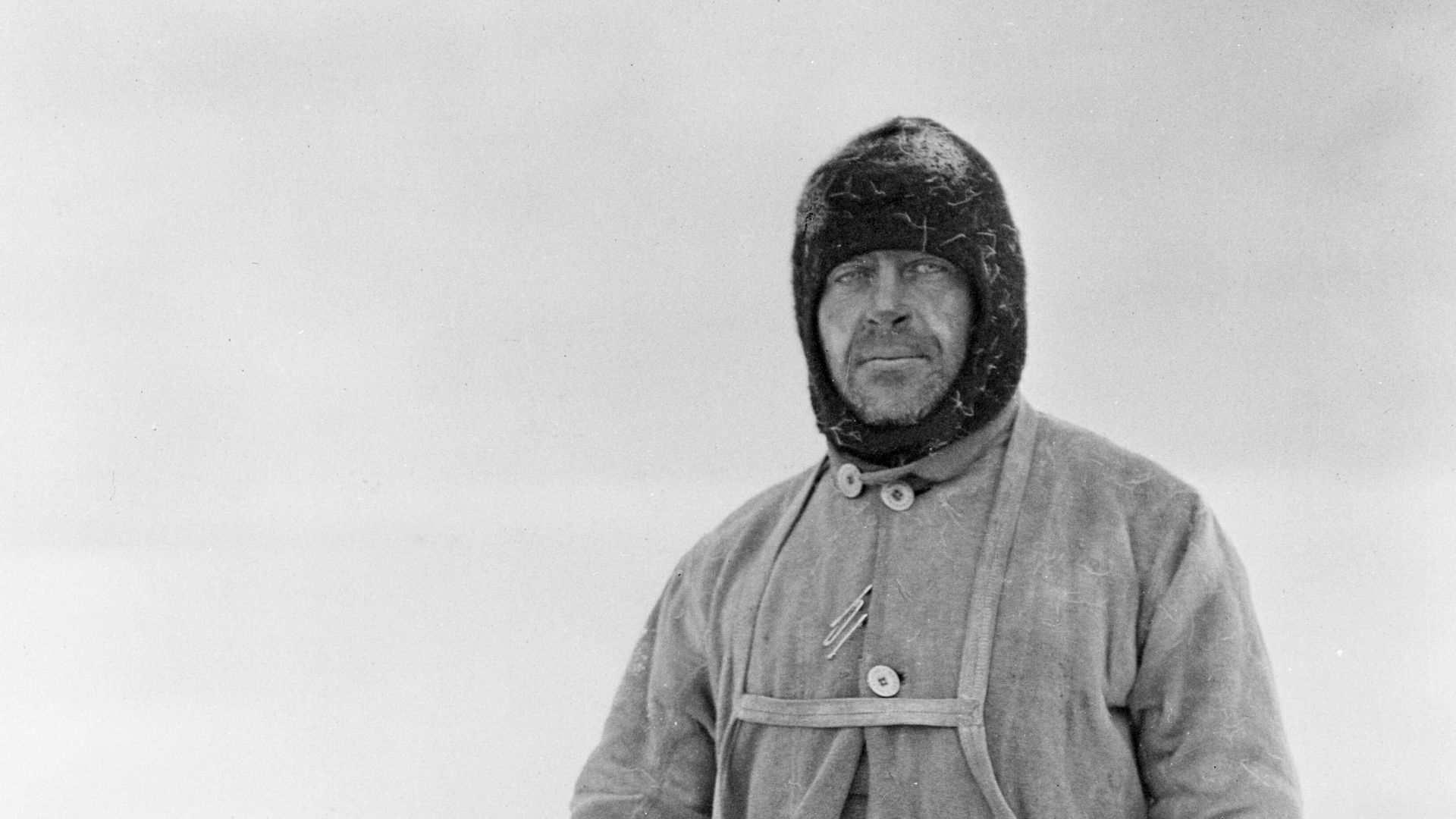 Herbert Ponting (1870-1935), Wikimedia Commons
Herbert Ponting (1870-1935), Wikimedia Commons
27. He Learned From His Mistakes
By this point in his career, Amundsen was a seasoned veteran of polar exploration, and most importantly, he had learned from his experiences. From his failed attempt in the Belgica, he’d learned to prepare for the risk of scurvy. However, it was his time in Gjoa Haven that gave him a true edge over the competition.
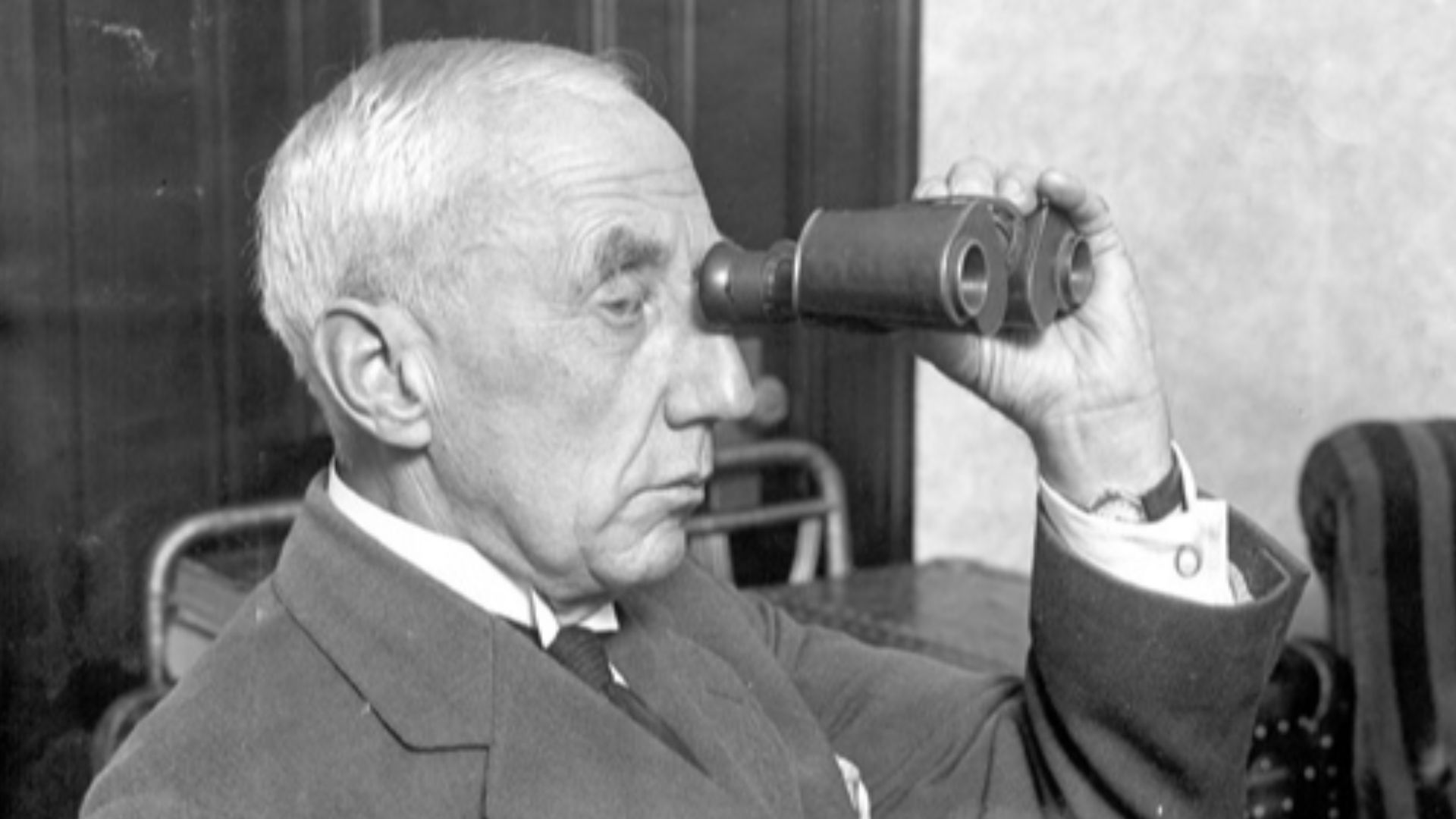 SDASM Archives, Wikimedia Commons
SDASM Archives, Wikimedia Commons
28. He Never Forgot
Amundsen didn’t waste his time in Gjoa Haven. He spent time with the Inuit and learned invaluable lessons from them. One of the big things that Amundsen learned to value from the Inuit was the use of animal furs to keep out the cold. This lesson proved essential once Amundsen arrived in Antarctica.
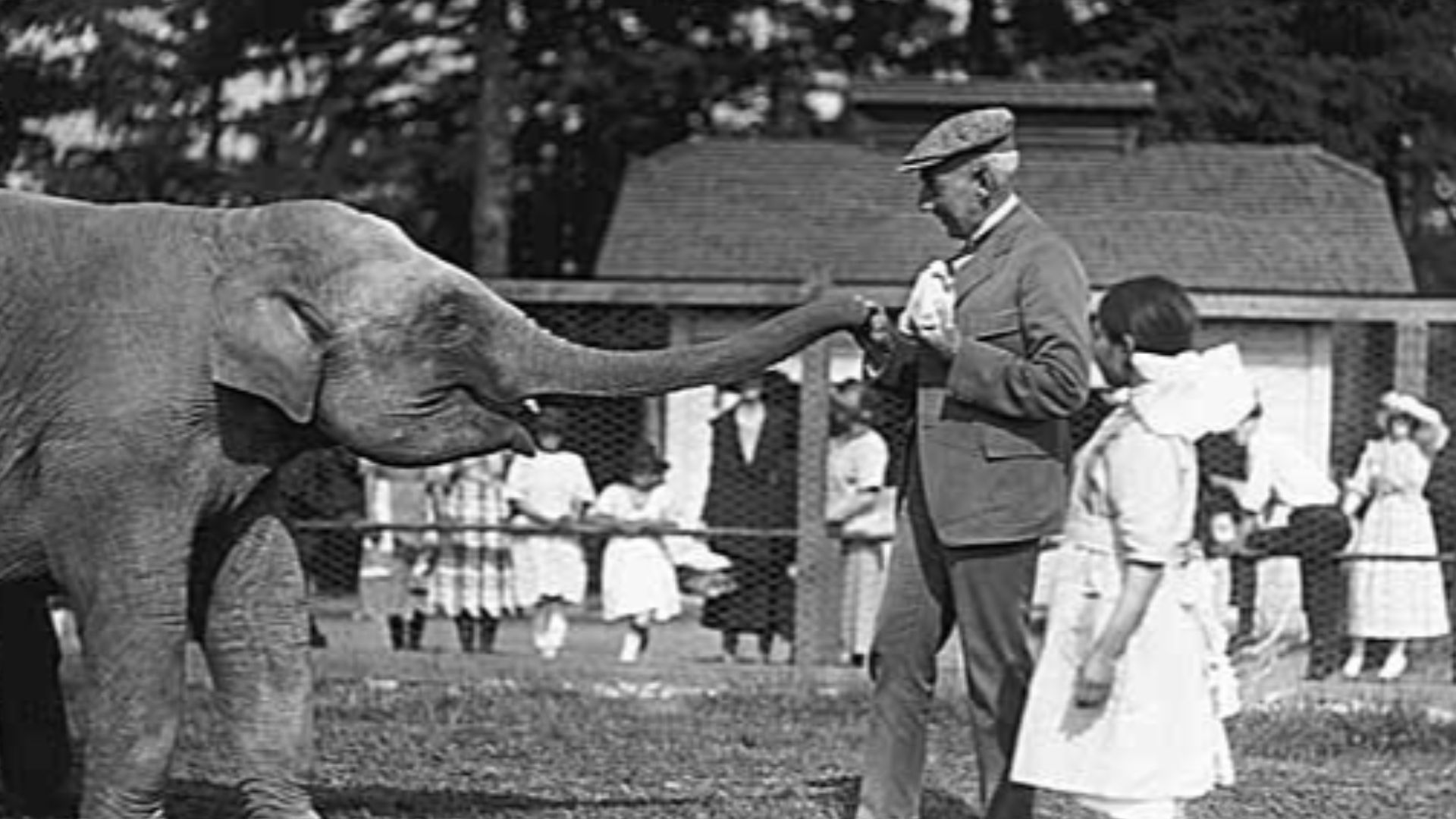 Webster & Stevens, Wikimedia Commons
Webster & Stevens, Wikimedia Commons
29. He Planned For Everything
When it came to cold weather, Europeans tended to load themselves up in layers of wool. While bulky wool parkas kept out the cold when dry, they lost all ability to repel the cold once they became wet. Alternatively, animals’ furs were designed to keep the animal warm, whether they were wet or cold. Amundsen learned one other thing from the Inuit that gave him an edge.
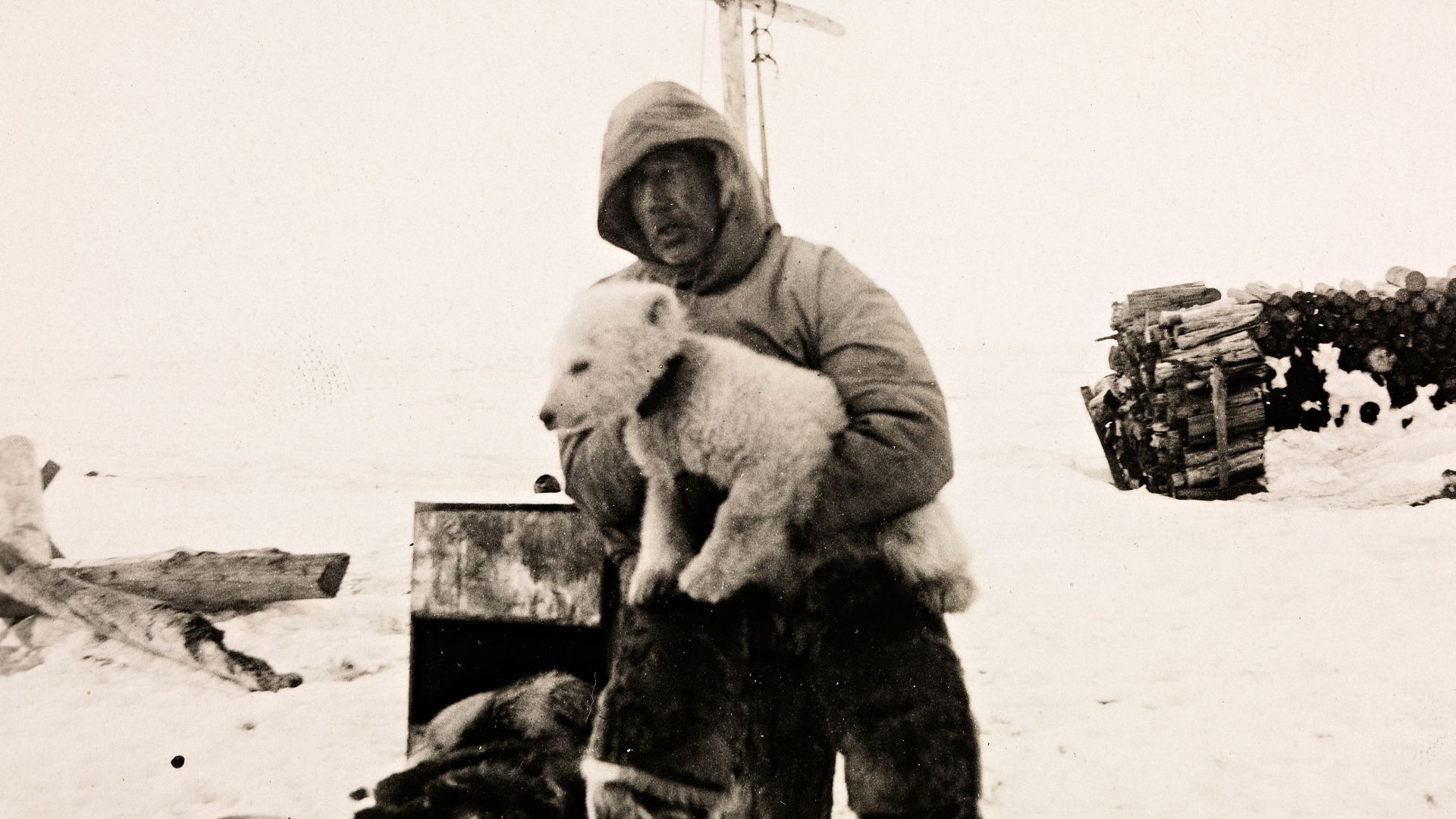 National Library of Norway, Wikimedia Commons
National Library of Norway, Wikimedia Commons
30. He Understood The Assignment
Amundsen learned how to use dog sled teams to transport both goods and people across the frozen tundra. Unlike Scott, who insisted on bringing a mix of dogs and ponies with him to carry them across the ice, Amundsen brought over 100 dogs to haul men—and for other, less savory, activities.
31. He Went To Dramatic Lengths
One of the reasons that Amundsen insisted on bringing so many dogs with him was that he intended to use them for more than just transportation. Food was scarce across the icy wastelands; Amundsen intended to use the dogs for both transportation and sustenance for not just the remaining dog team, but himself and his men as well. It’s truly a dog-eat-dog world out in the snow.
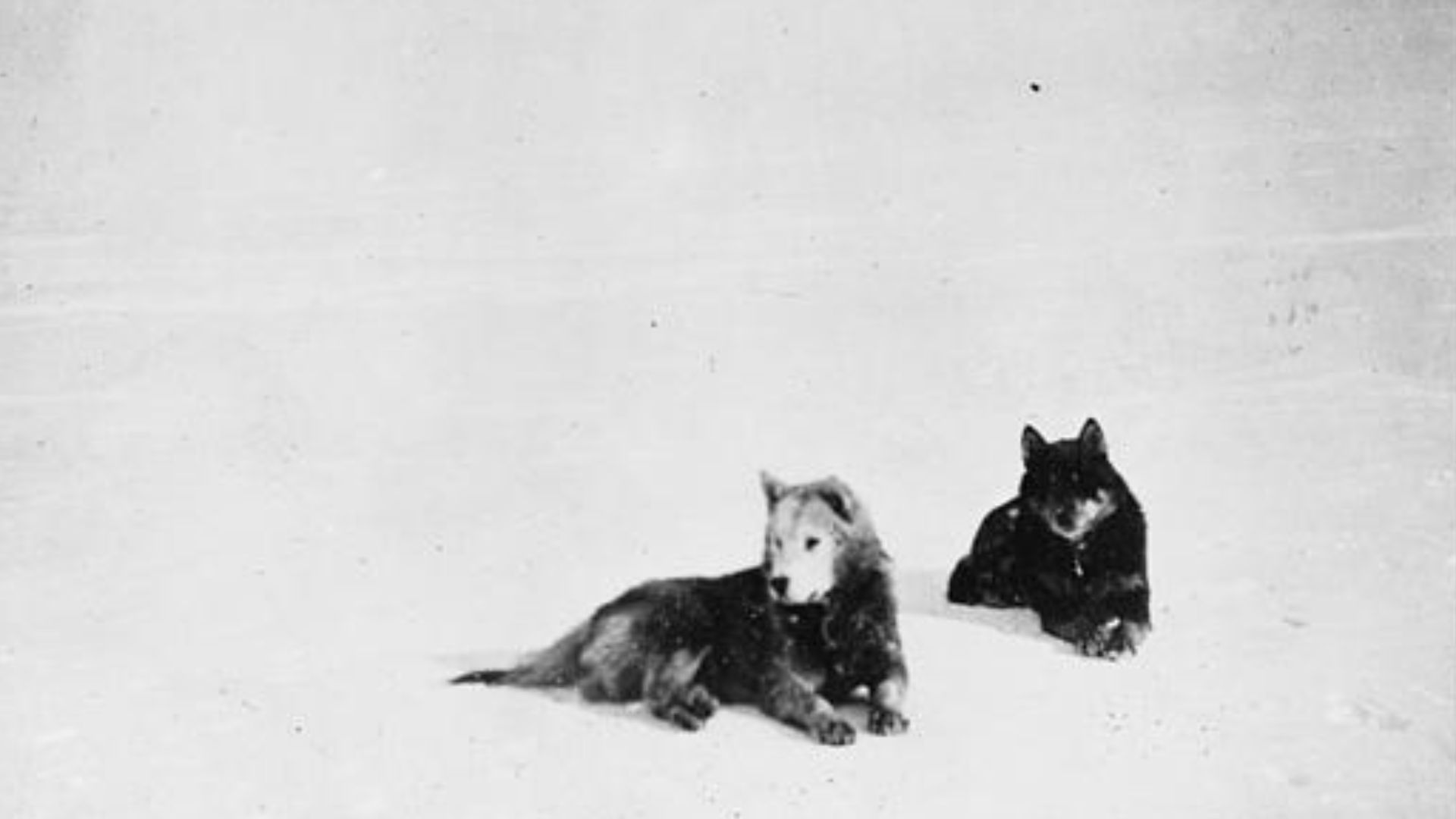 Member of the Amundsen's South Pole Expedition, various unknown, Wikimedia Commons
Member of the Amundsen's South Pole Expedition, various unknown, Wikimedia Commons
32. His Crew Began To Crumble
Amundsen’s first attempt to reach the pole set out in September; however, extreme temperatures forced them back. Suffering from failure and nearly freezing, tempers began to rise among the group. Fighting broke out among some of the men. Amundsen’s dreams seemed to be crumbling in front of him unless he did something about it.
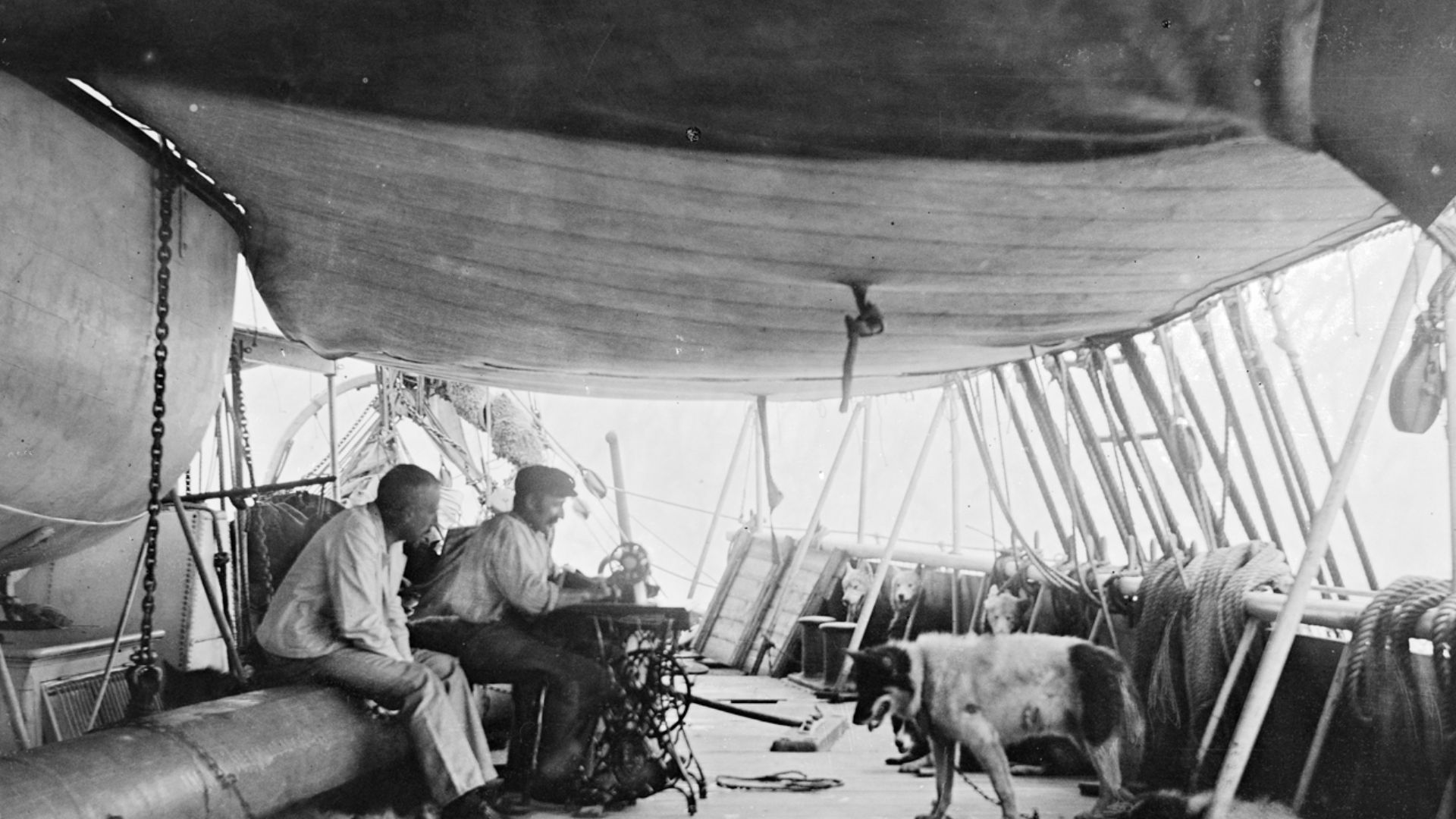 Nasjonalbiblioteket from Norway, Wikimedia Commons
Nasjonalbiblioteket from Norway, Wikimedia Commons
33. He Made An Executive Decision
To keep peace in the camp, Amundsen sent the group of troublemakers on a secondary mission to explore elsewhere. Meanwhile, Amundsen, four other men, and 52 sled dogs took off into the frozen wasteland with only one destination in mind. They would make it to the South Pole or die trying.
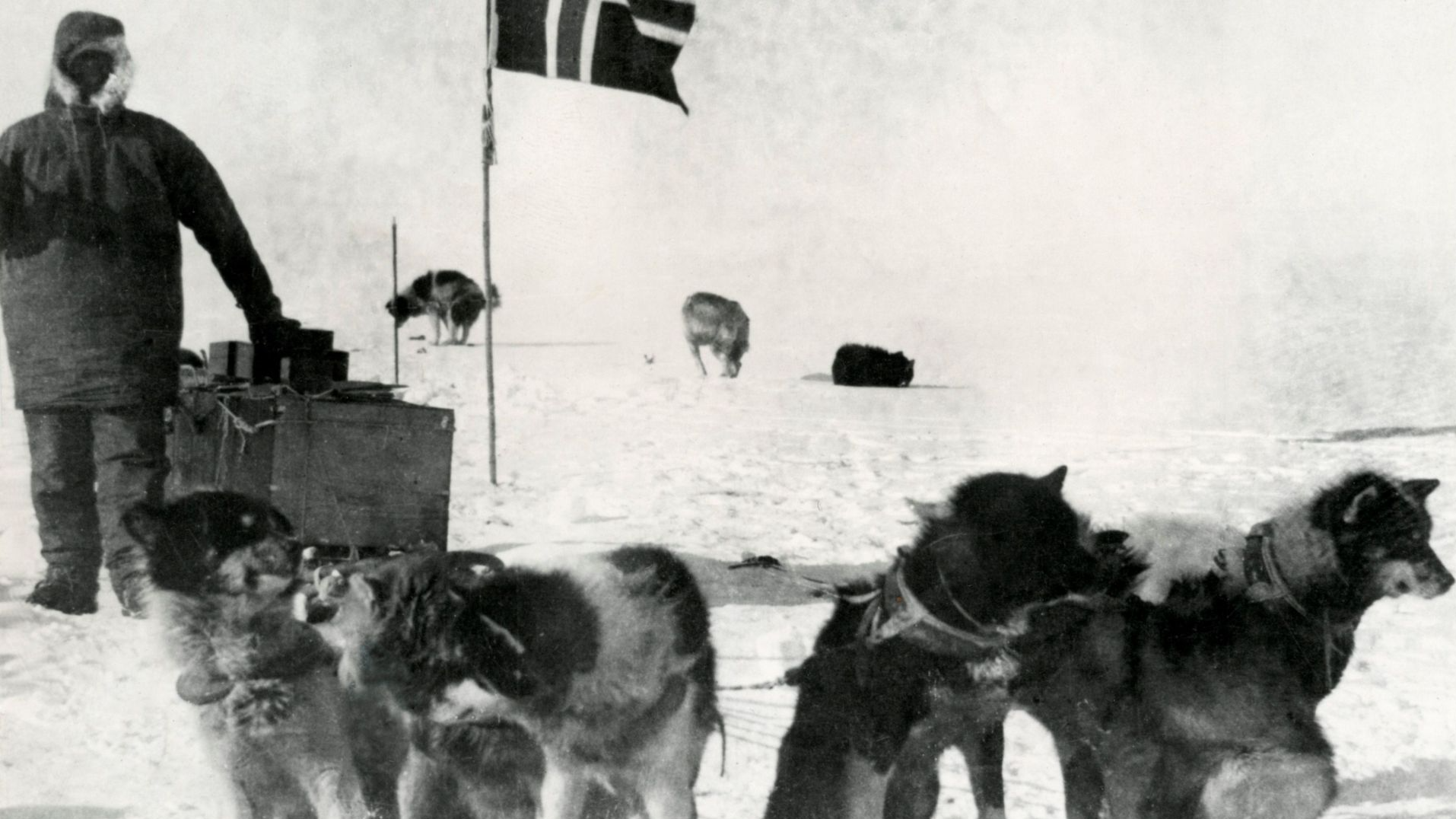 Unknown authorUnknown author, Wikimedia Commons
Unknown authorUnknown author, Wikimedia Commons
34. He Kept On Going
Amundsen and his team set out on October 19. Nearly two months later, on December 14, they arrived at the South Pole. Robert Scott’s expedition, which they had seen land months before, was nowhere to be seen—they were the first people to reach the South Pole. Now they had another perilous task ahead of them: they needed to get back.
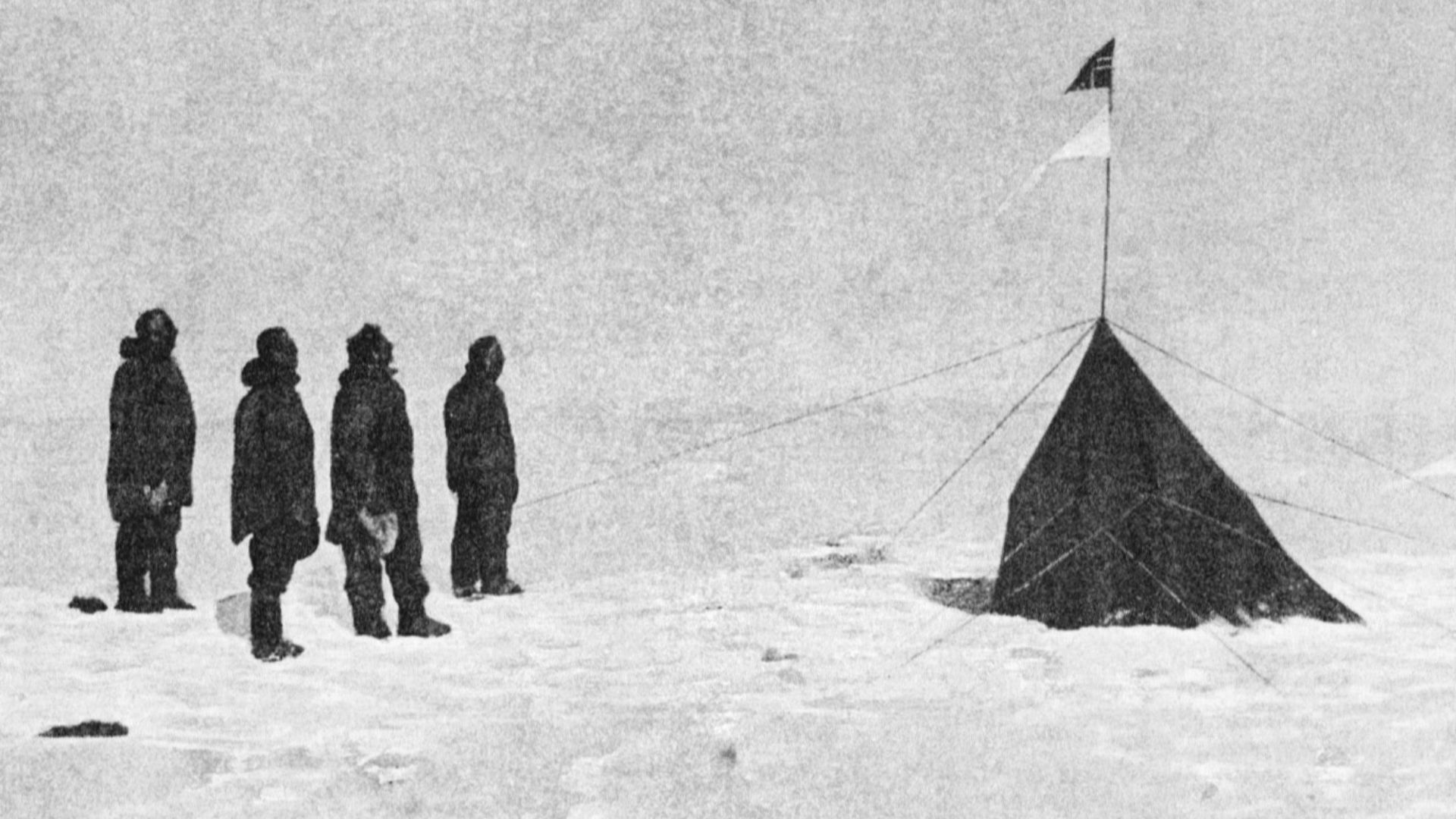 Olav Bjaaland (1863-1961)[1], Wikimedia Commons
Olav Bjaaland (1863-1961)[1], Wikimedia Commons
35. He Needed To Survive Again
Knowing the way proved beneficial. Amundsen, his men, and 11 of the original 52 dogs returned to basecamp on January 25, 1912, around the same time that Robert Scott and his team reached the pole to discover that Amundsen beat him to the discovery. Amundsen set sail to celebrate his victory, unaware of the tragedy that would soon taint it.
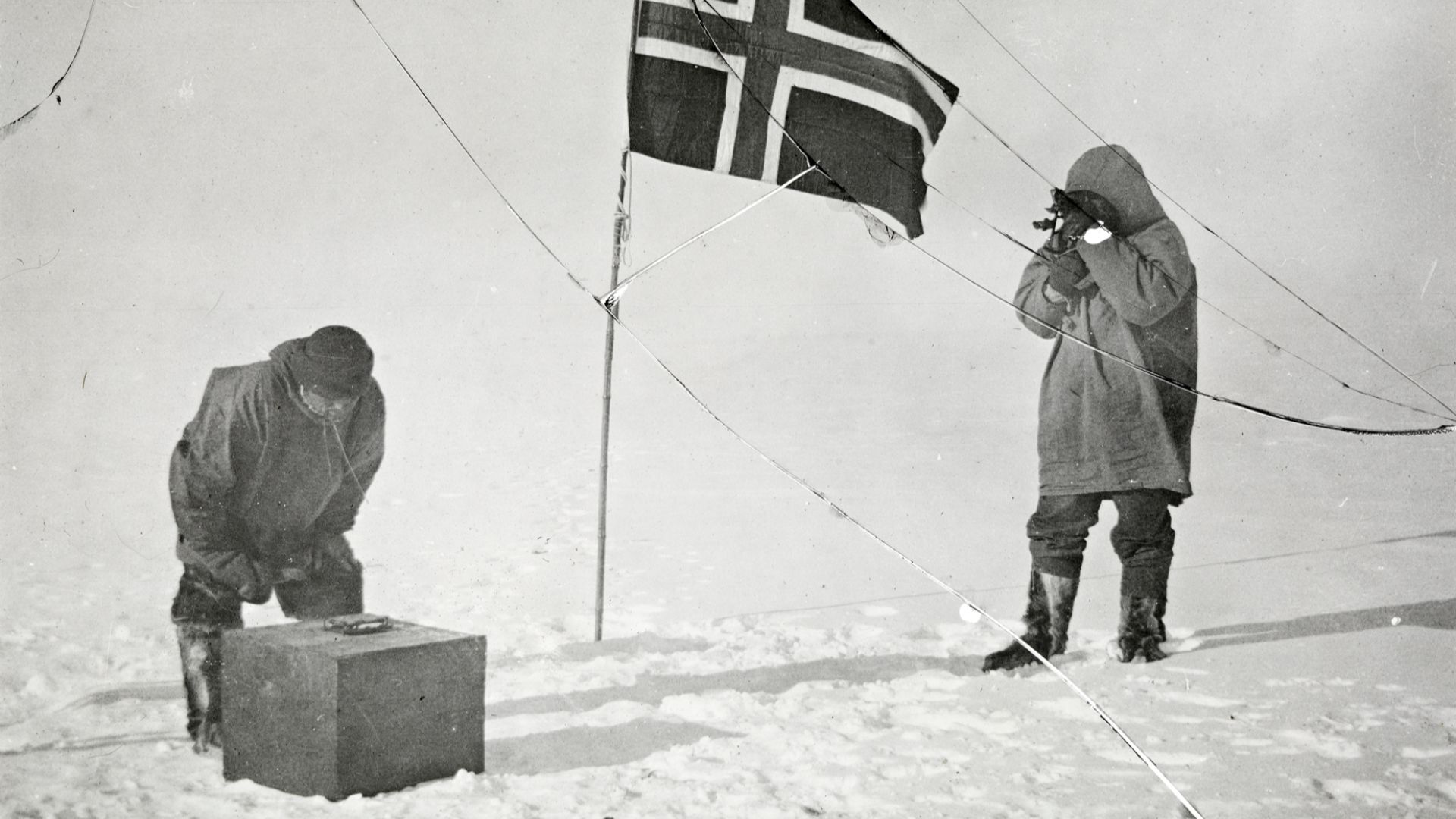 Unknown authorUnknown author, Wikimedia Commons
Unknown authorUnknown author, Wikimedia Commons
36. His Success Was Marred
Amundsen reached Australia in March and announced his successful mission. By this point, he’d likely already learned of the tragedy he’d left behind him—while Scott’s team made it to the pole, all the men perished before they made it back to the safety of their ship. Despite Scott’s stark reminder of the risks involved in polar explorations, Amundsen’s success left him hungry for more.
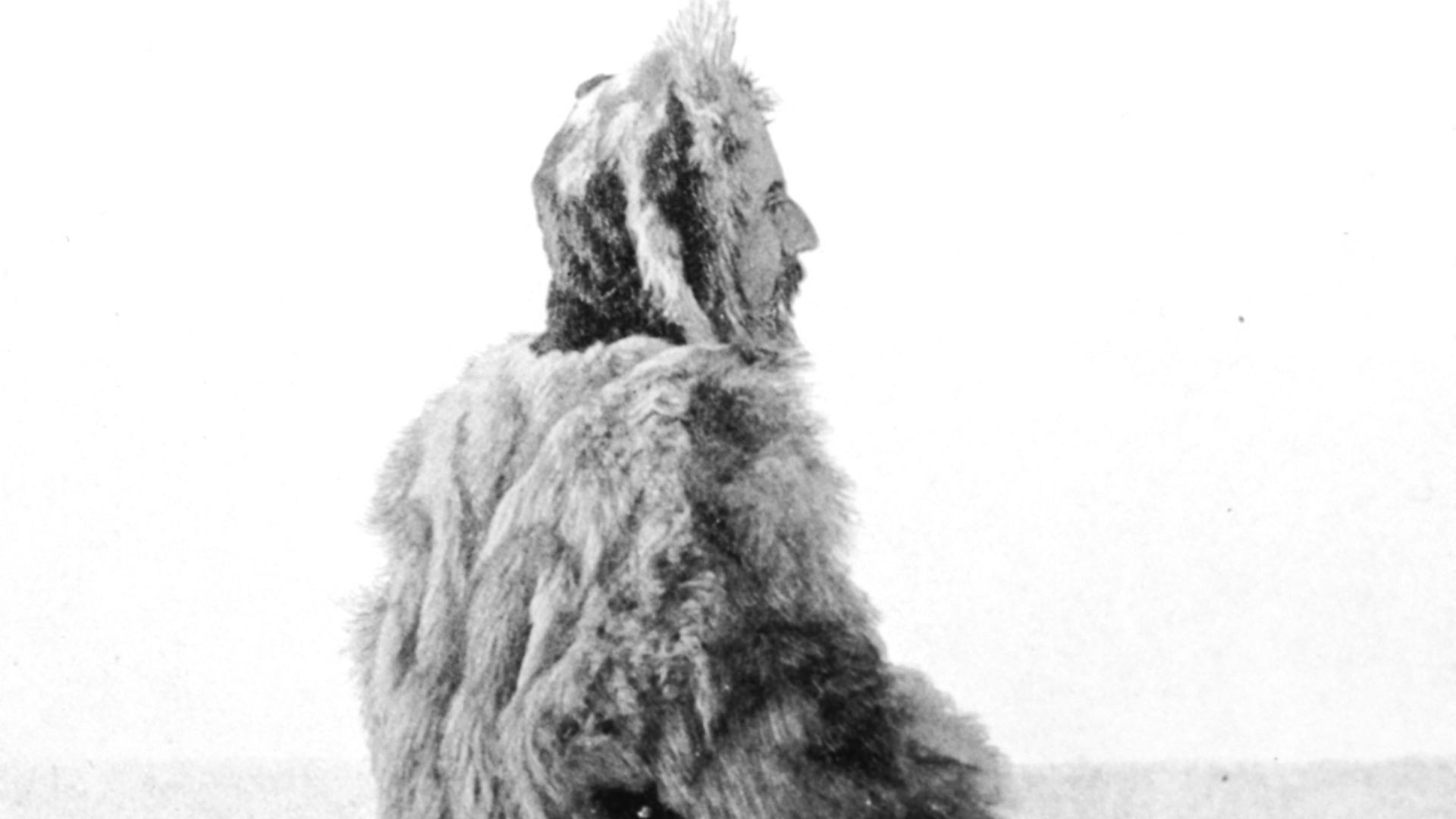 Anders Beer Wilse, Wikimedia Commons
Anders Beer Wilse, Wikimedia Commons
37. He Refused To Sit Down
Having successfully navigated two perilous journeys, Amundsen continued to pursue greatness. He’d been to the South Pole. Now he wanted the North Pole. 1918 saw Amundsen and his crew depart on Maud, with this destination in sight. However, Amundsen quickly got a taste of something he hadn’t seen in a very long time.
38. He Had a Simple Plan
The plan for the North Pole was deceptively simple. Amundsen intended to follow in the footsteps of a previous explorer and lock Maud in the ice. Once Maud was frozen, they would simply drift to the North Pole. While the plan seemed simple in theory, it became riddled with difficulties and complications in practice.
39. He Couldn’t Execute It
First, Amundsen couldn’t get the ship broken out of the ice when they intended, and even when they did, it promptly froze again. Making matters worse, Amundsen fell into unexpected danger. At one point, while out on the ice, Amundsen came into contact with one problem that he couldn’t stubborn his way out of.
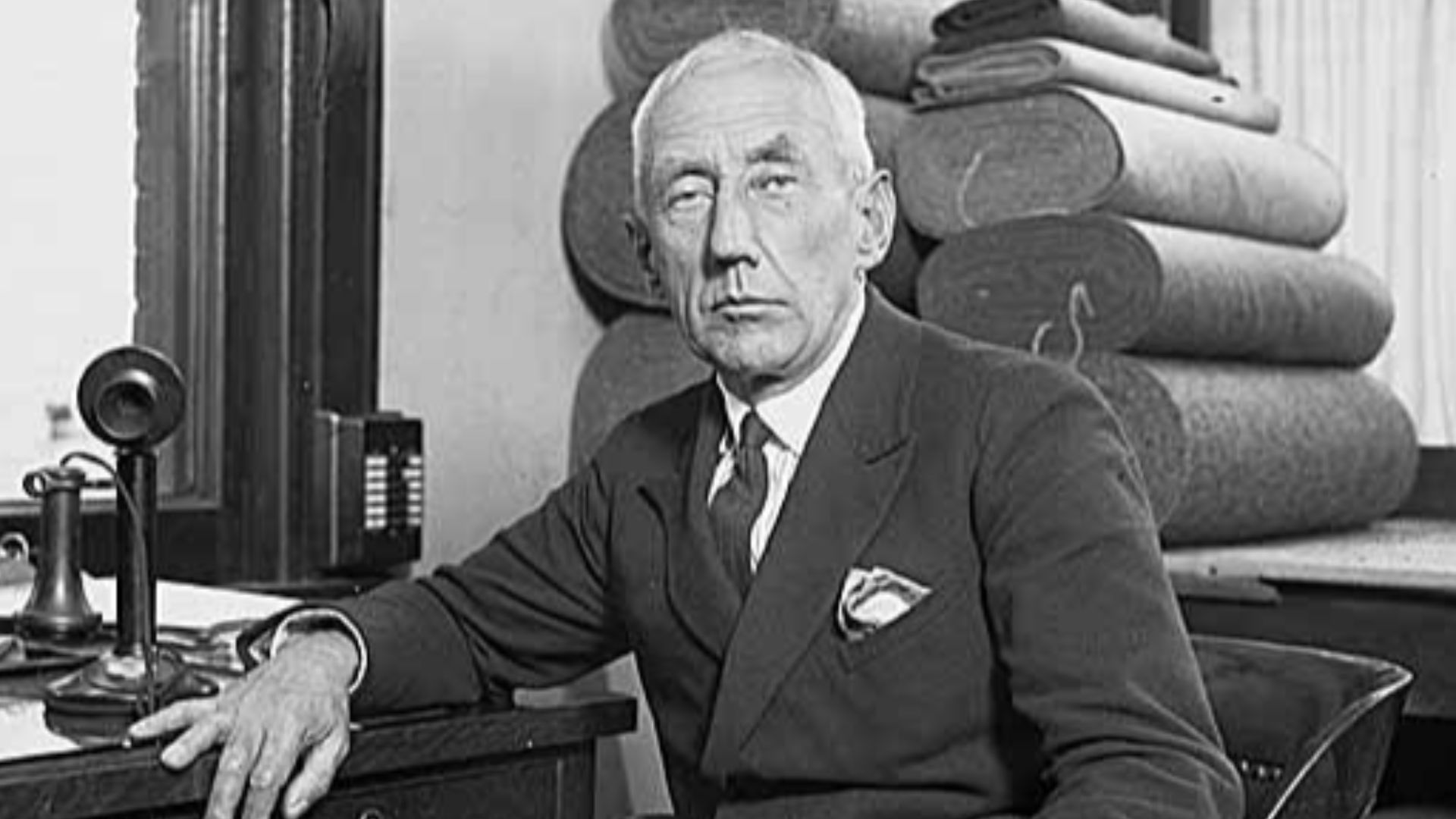 Staff Photographer, Seattle Post-Intelligencer, Wikimedia Commons
Staff Photographer, Seattle Post-Intelligencer, Wikimedia Commons
40. He Lost To The Elements
As if he wasn’t going through a run of bad luck already, Amundsen met a polar bear, which attacked him and left him with a broken arm. Amundsen was certain the bear would kill him, but was saved in the nick of time by one of his dogs, who drew its attention by barking and running away. Naturally, from then on he was forced to leave the heavy lifting to his men. The crew spent two winters trapped in ice before admitting defeat. They headed first for Nome, Alaska, before even more failure forced them even further south. It was time to reconsider their plans.
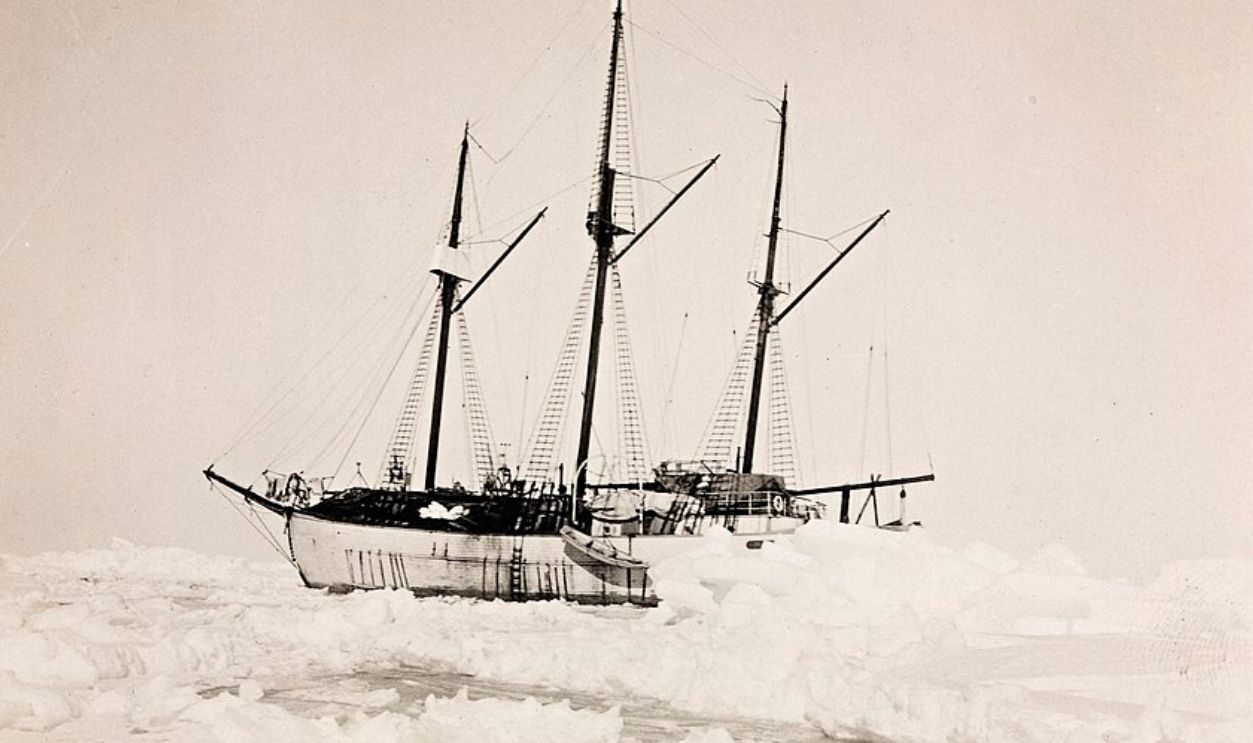 Nasjonalbiblioteket from Norway, Wikimedia Commons
Nasjonalbiblioteket from Norway, Wikimedia Commons
41. His Empire Crumbled
Failure did not look good on Amundsen. Amundsen now faced another issue: mounting financial issues. Leaving Maud and most of his crew in Seattle, Amundsen returned to Norway in order to deal with his issues. However, he did not return on his own. At some point in his adventures, Amundsen had found something interesting.
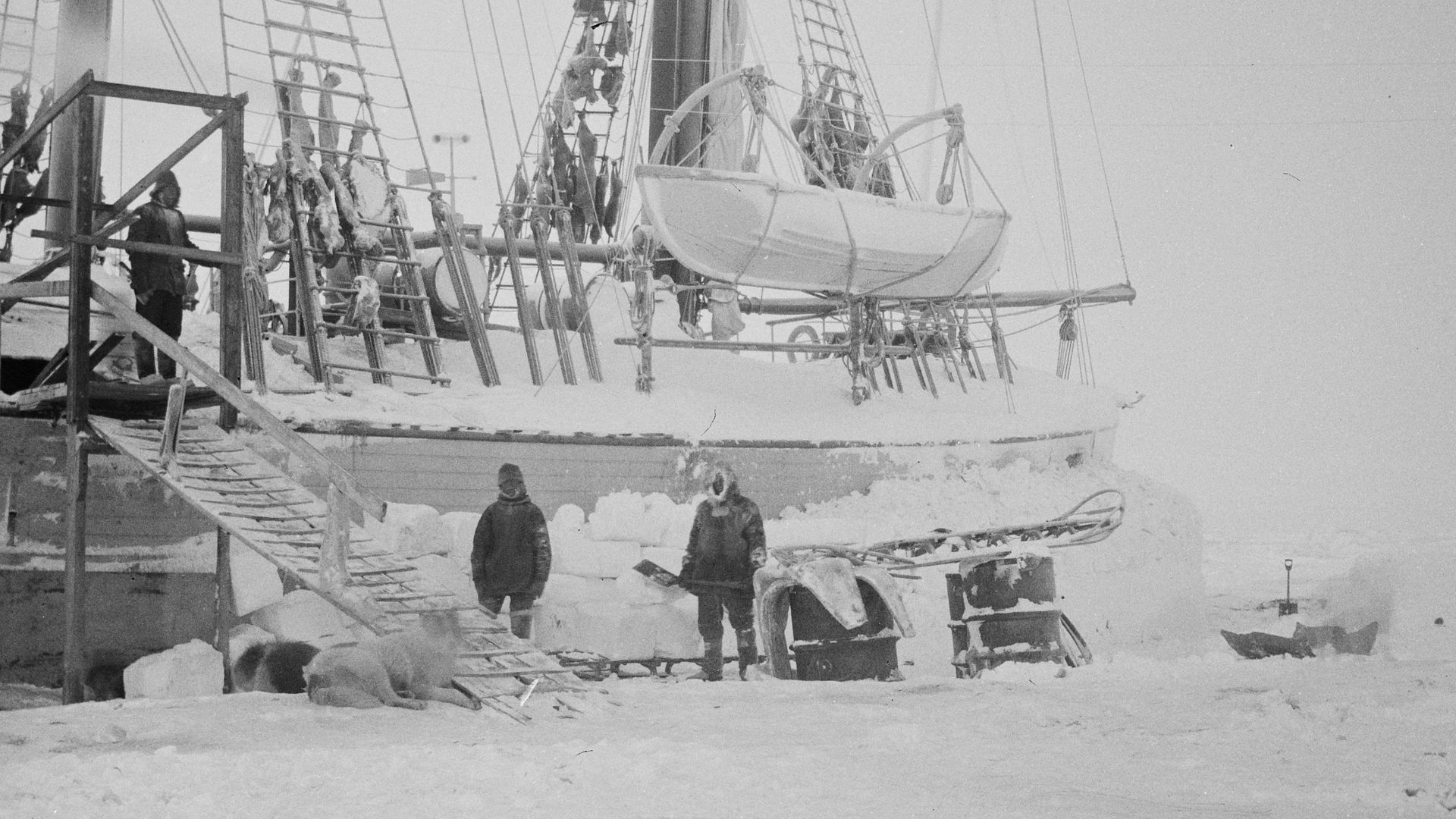 National Library of Norway, Wikimedia Commons
National Library of Norway, Wikimedia Commons
42. He Made A Family
Amundsen returned to Norway with two young girls. Both four-year-old Kakonita and six-year-old Camilla were of Chukchi descent, an ethnic group native to the Siberian side of the Bering Strait. Both girls came aboard Amundsen’s ship at some point during his failed journey, and both returned with Amundsen to Norway. However well-intended Amundsen may have been with these girls, he still had one thought on his mind.
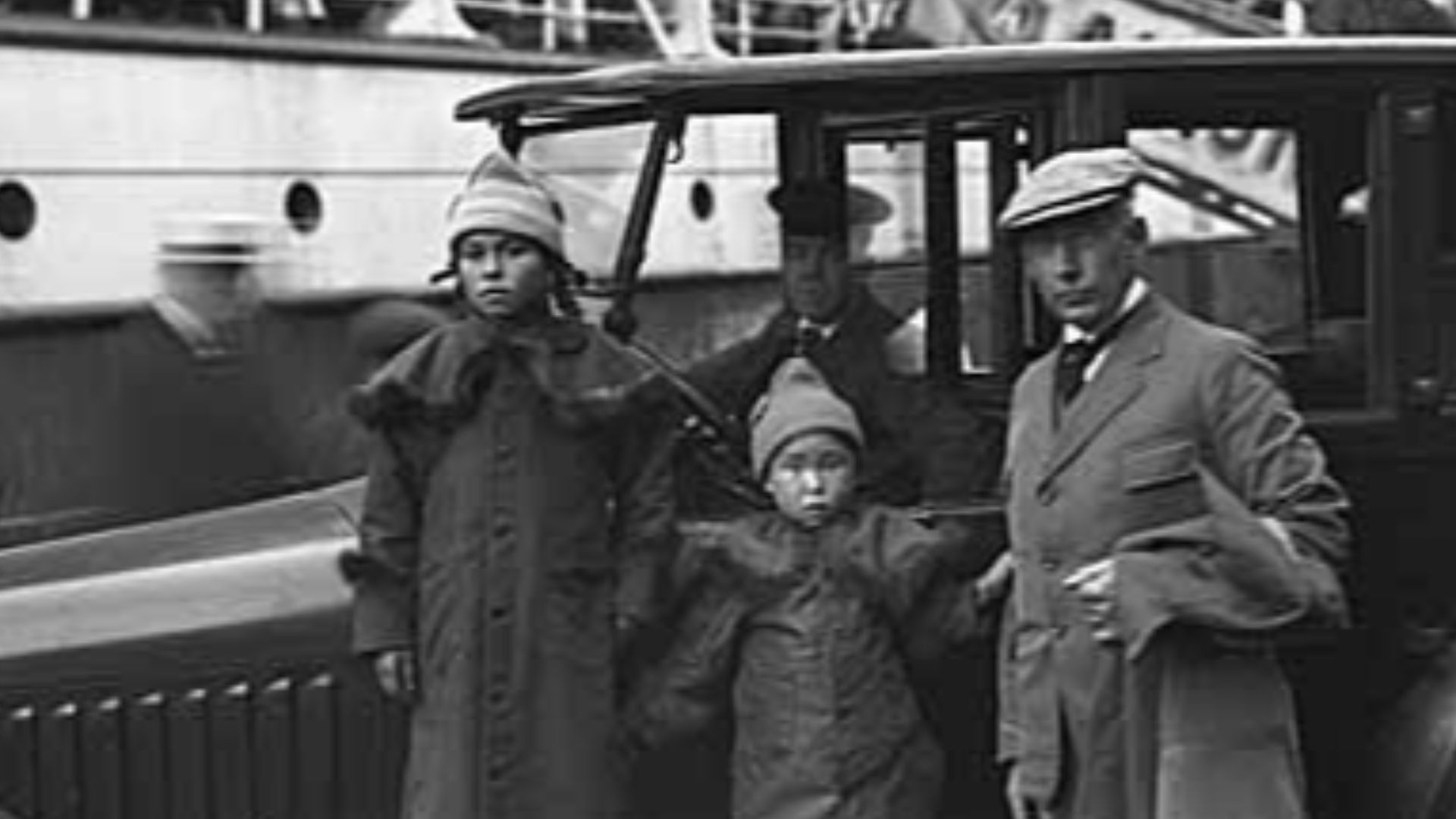 Webster & Stevens, Wikimedia Commons
Webster & Stevens, Wikimedia Commons
43. He Never Forgot His First Love
Roald Amundsen tried to settle down and live happily ever after with his family—but in the end, his love for the Arctic cost him everything. Despite adopting two little girls, Amundsen was determined to reach the North Pole. Just two years after becoming a father, and with dwindling finances, he was forced to make a choice: care for the girls or fund his travels. Amundsen chose adventure over family and sent the girls to live with relatives.
That's when he headed back to Maud with a new plan in mind.
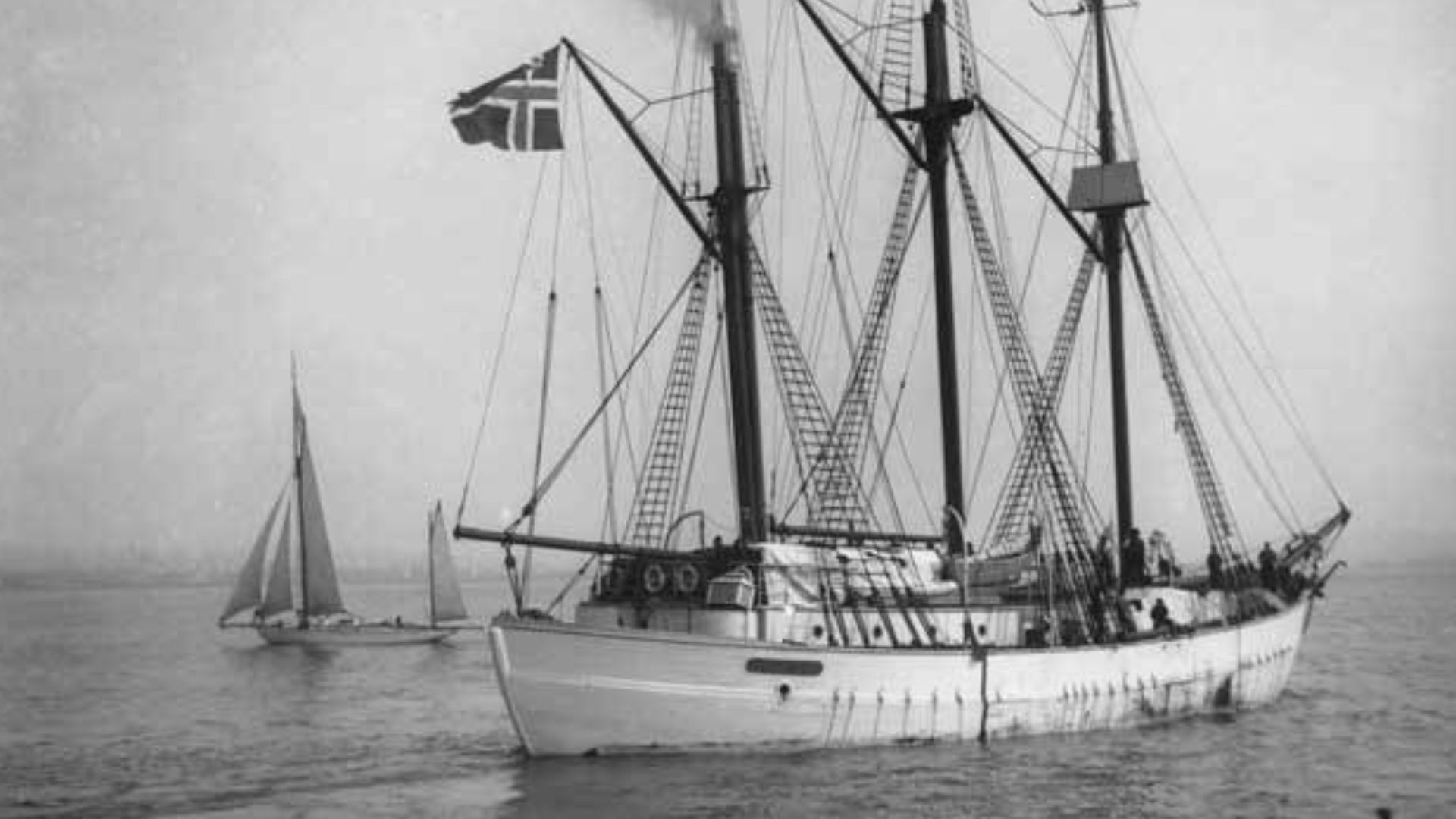 Staff Photographer, Seattle Post-Intelligencer, Wikimedia Commons
Staff Photographer, Seattle Post-Intelligencer, Wikimedia Commons
44. He Made A New Plan
If he could not get to the North Pole by land or sea, then Amundsen would get there by plane. His first attempt to fly over the pole failed in 1923, but Amundsen refused to give up. Two years later, he tried again, flying with two float planes north towards the pole. While they landed at the northernmost latitude reached at that time, they had a new problem to contend with.
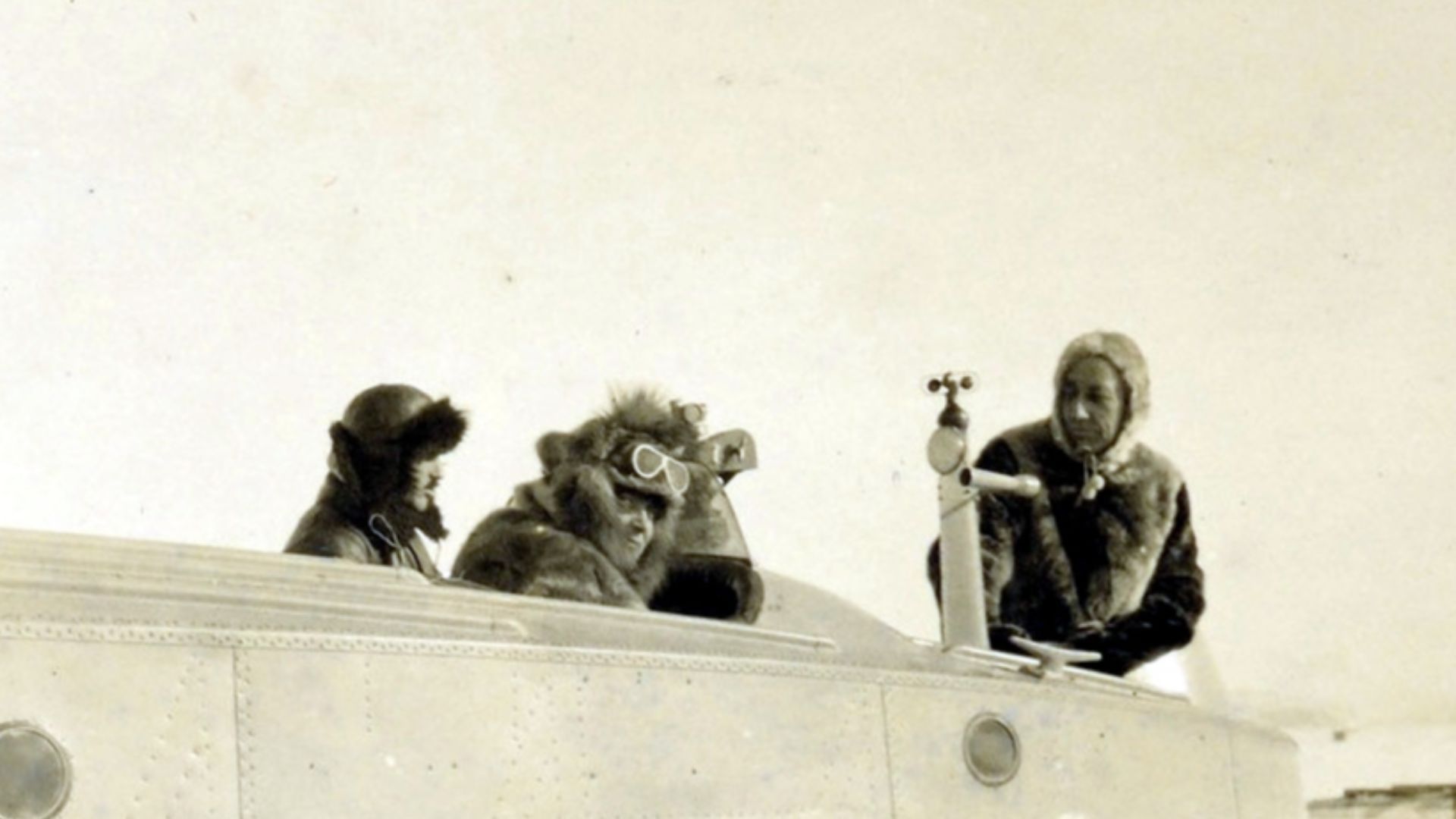 Preus museum, Wikimedia Commons
Preus museum, Wikimedia Commons
45. He Was Trapped—Again
Amundsen landed. However, he couldn’t get home. They damaged one of the two planes upon landing, and there was no runway for the other to take off. Trapped, there was nothing for the crew to do but get to work. Eating only one pound of food a day, they painstakingly removed ice bit by bit. It was work or freeze.
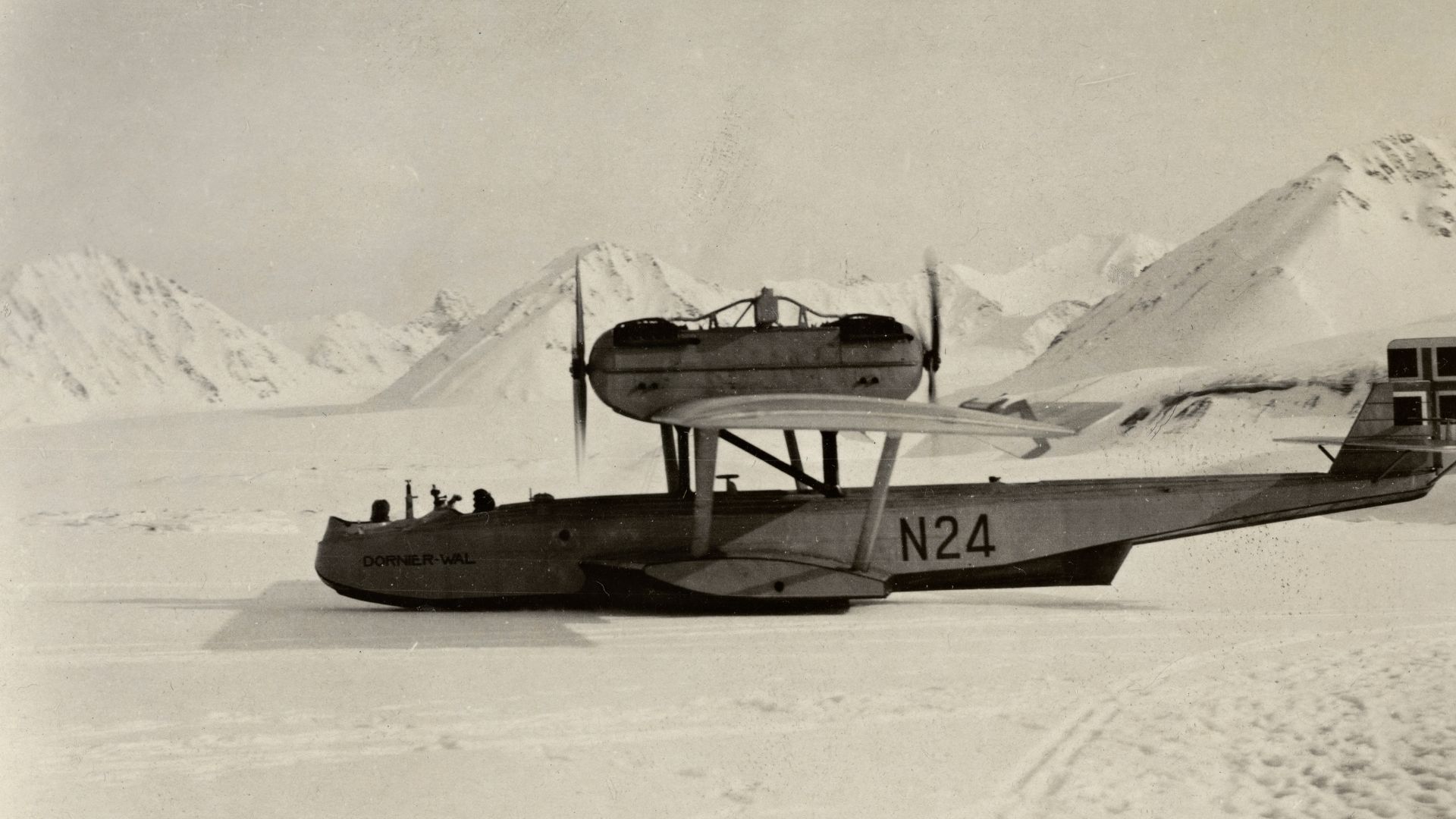 National Library of Norway, Wikimedia Commons
National Library of Norway, Wikimedia Commons
46. He Didn’t Give Up
After three weeks of grueling work, they removed 600 tons of ice and finally all piled into the one remaining plane, just barely making liftoff over the cracking ice below. Their triumphant return from near death only encouraged Amundsen to reach for more. He was so close. Giving up this dream now would be worse than death.
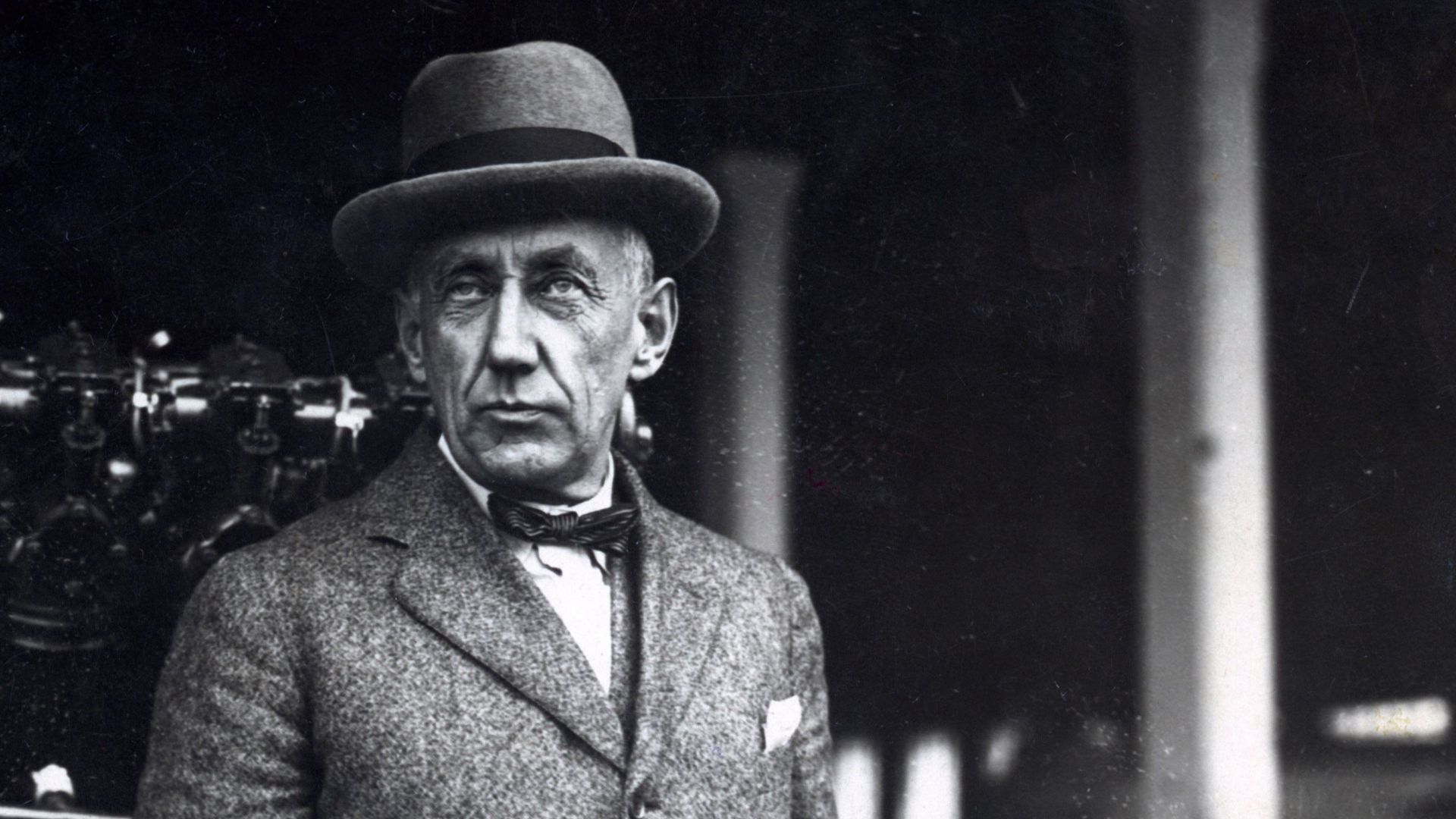 Unknown authorUnknown author, Wikimedia Commons
Unknown authorUnknown author, Wikimedia Commons
47. He Benefited From Controversy
Finally, in 1926, Amundsen completed his goal when his plane, Norge, flew over the North Pole. As you may recall, two men had already claimed to reach the North Pole in the early 1900s, and another man made a claim just days before Amundsen reached the North Pole with Norge. However, controversy exists over every one of these claims, making Amundsen’s claim all the more important. Which may be why it went to his head.
48. He Played The Hero
In June 1928, Amundsen launched a rescue mission, flying out into the mysterious north in order to retrieve the missing members of another crash. Umberto Nobile’s plane, Italia, had crashed returning from the North Pole. Amundsen intended to rescue his friend and his crew when he took off; no one ever saw Amundsen again.
49. His Legacy Vanished Into The Ice
Roald Amundsen disappeared on June 18, 1928, along with the rest of his four-man team. Despite a rescue effort, to date, all that anyone’s ever found of Amundsen’s plane is a wing-float and a bottom gas tank. It’s assumed that Amundsen crashed into the Barents Sea, yet the mystery carries on. What happened to Roald Amundsen?
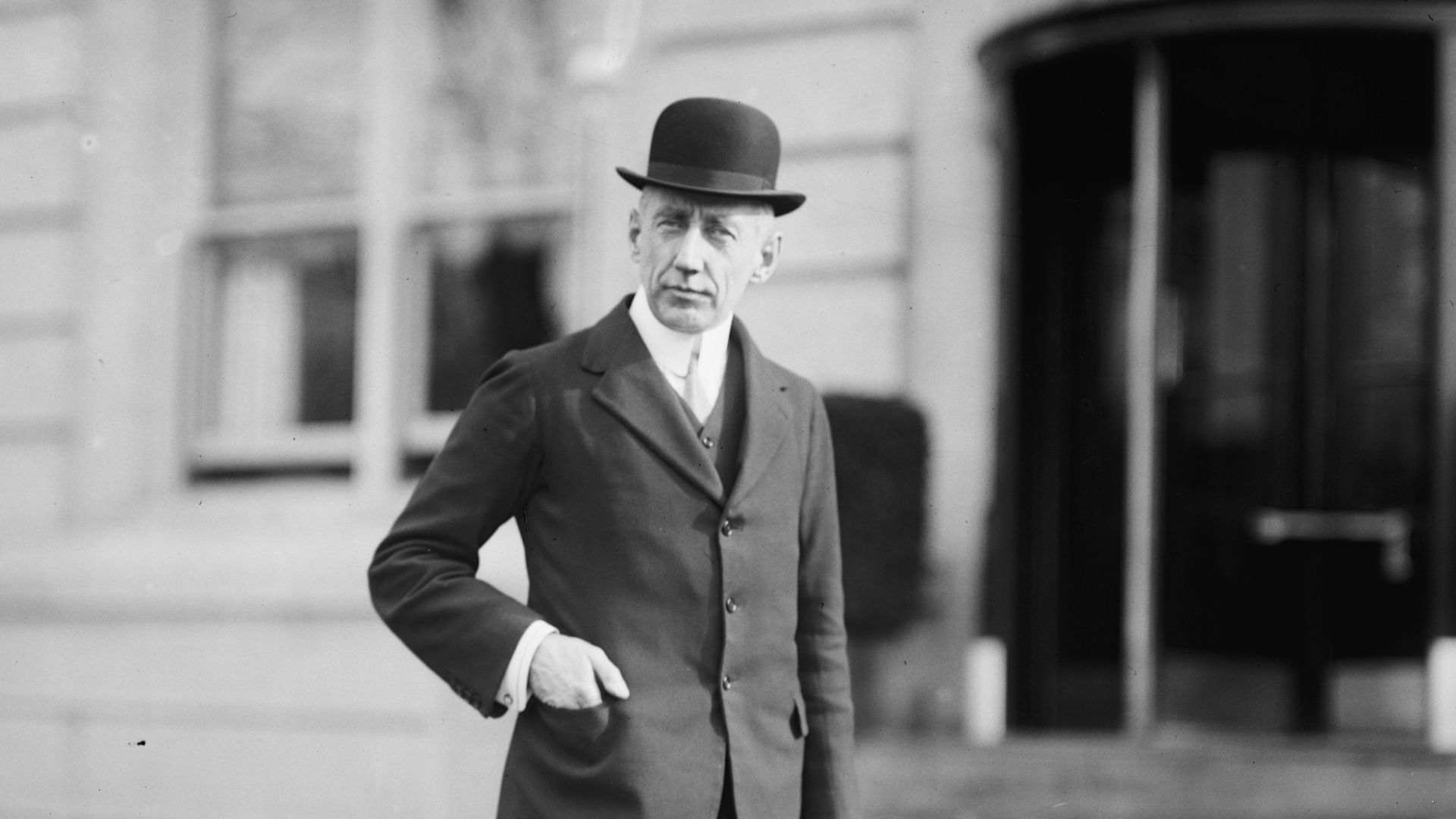 National Photo Company Collection, Wikimedia Commons
National Photo Company Collection, Wikimedia Commons
50. He Never Left The Arctic
In 2004 and 2009, Norway attempted to search the sea floor for Amundsen’s wrecked plane, yet nothing was found. In the end, the boy whose heart had been captured by the Arctic vanished into it without a trace. Yet, no one can forget his legacy. Roald Amundsen fearlessly traversed unknown lands, making the world smaller bit by bit, even at his own expense.
You May Also Like:
Explorer Robert Scott’s Diaries Reveal His Tragic Fate
Juan Sebastian Elcano: The First Person To Successfully Sail Around The World

